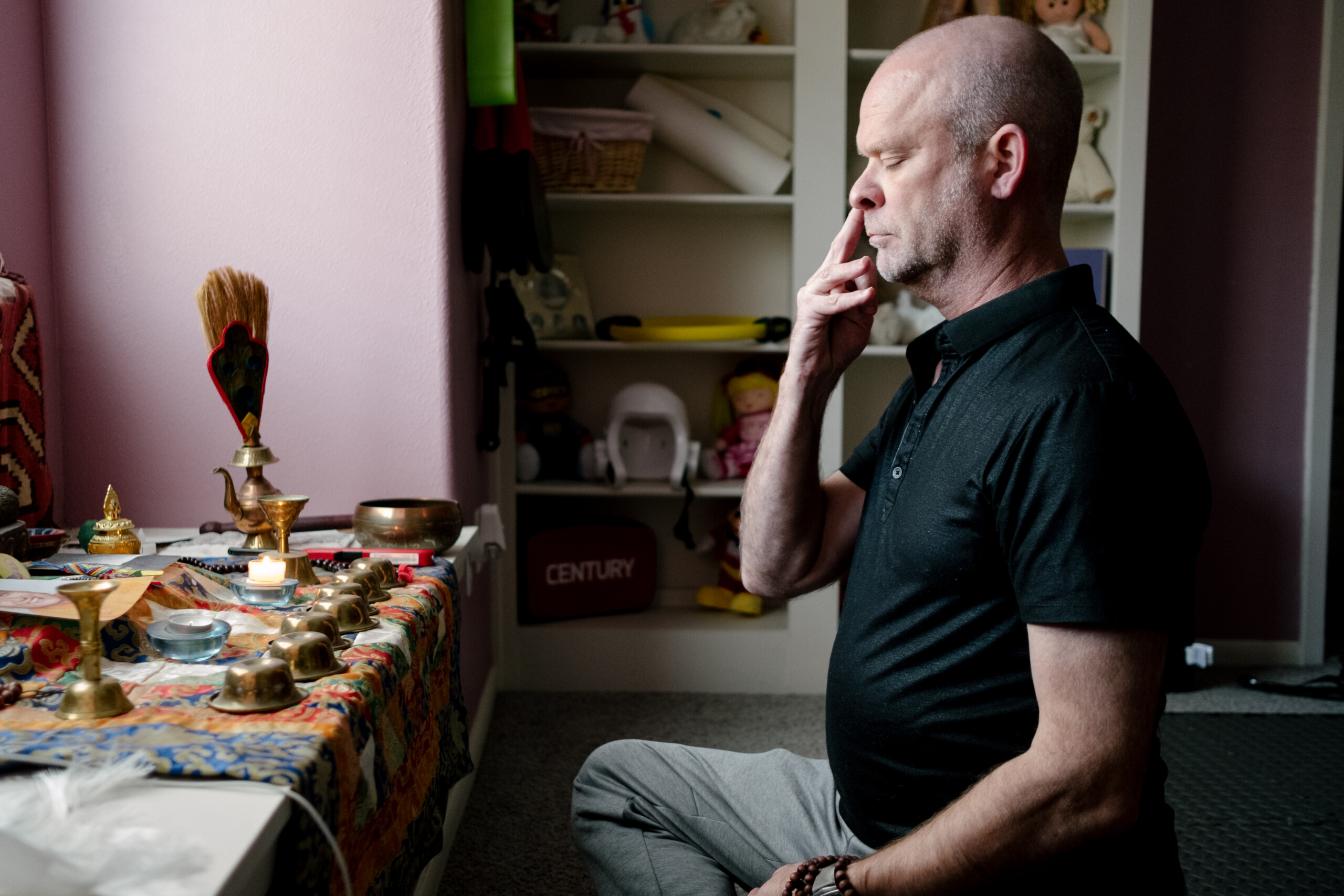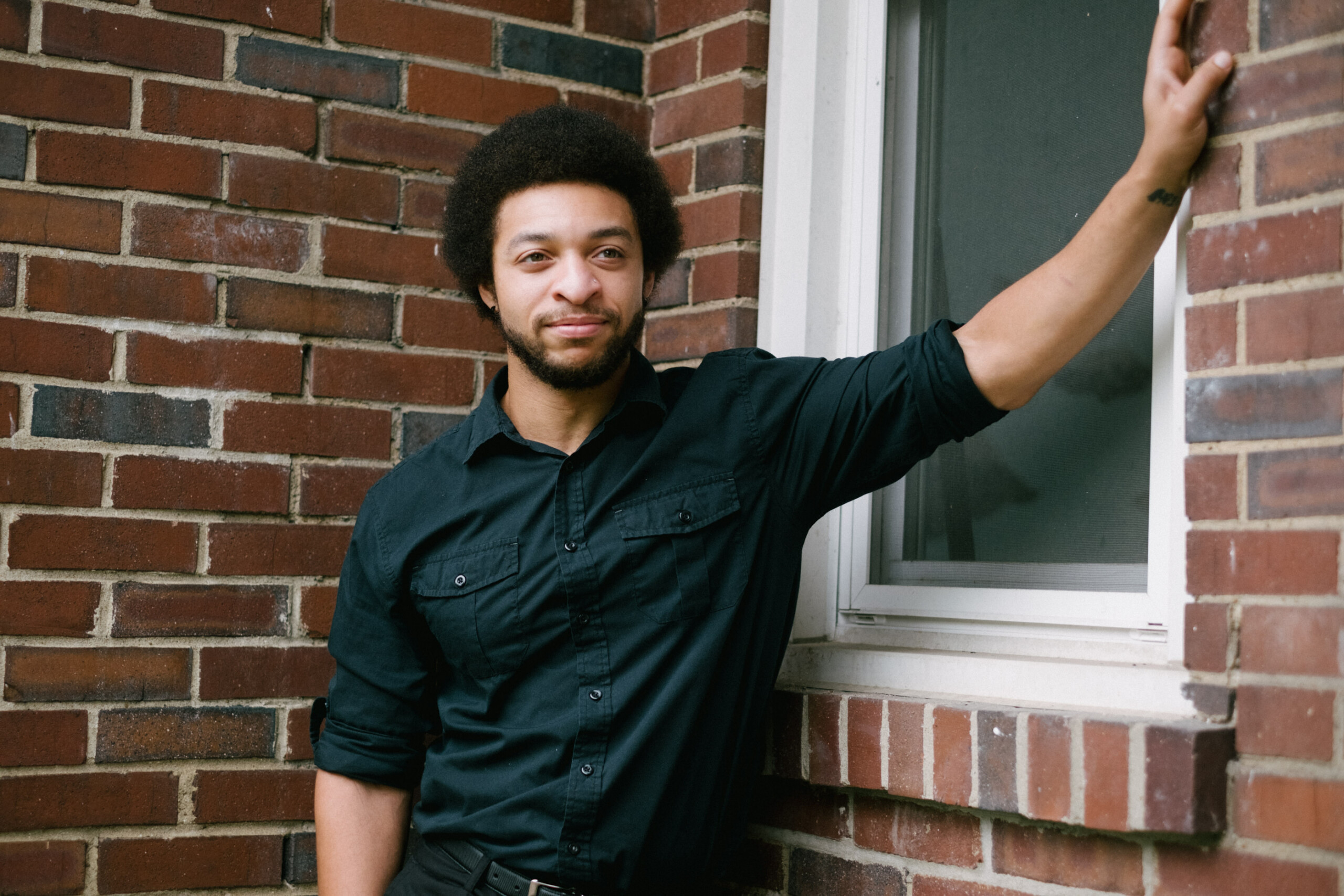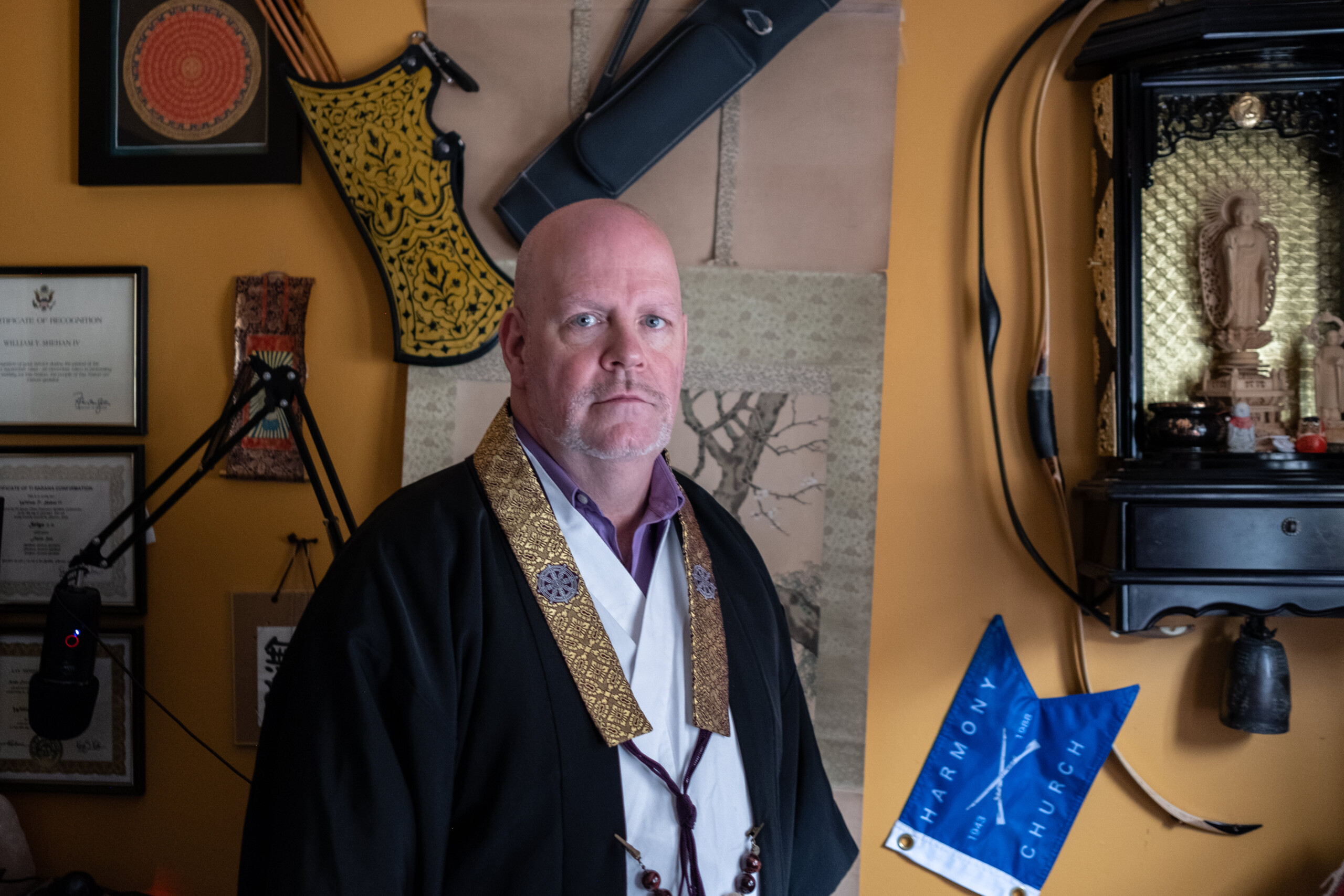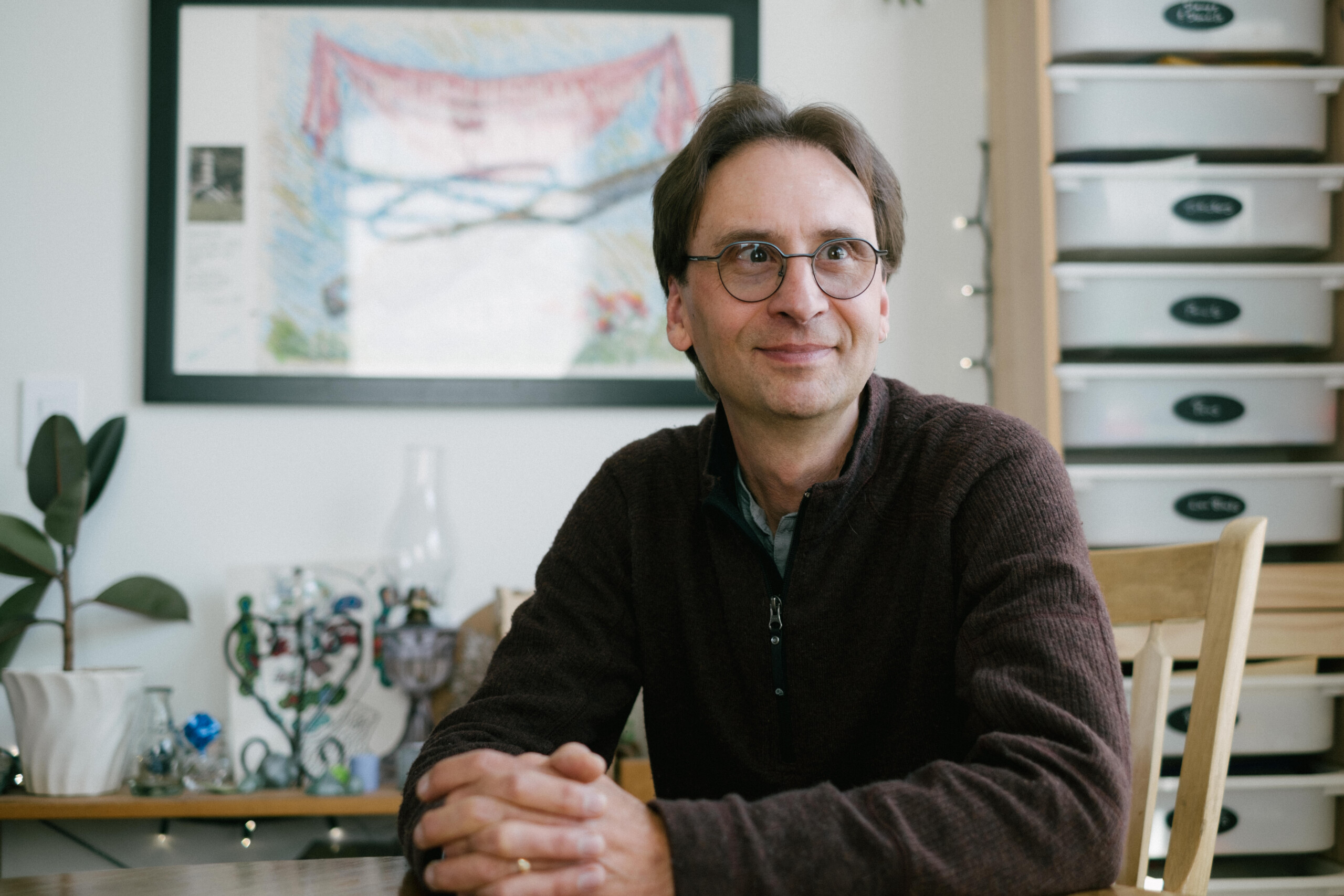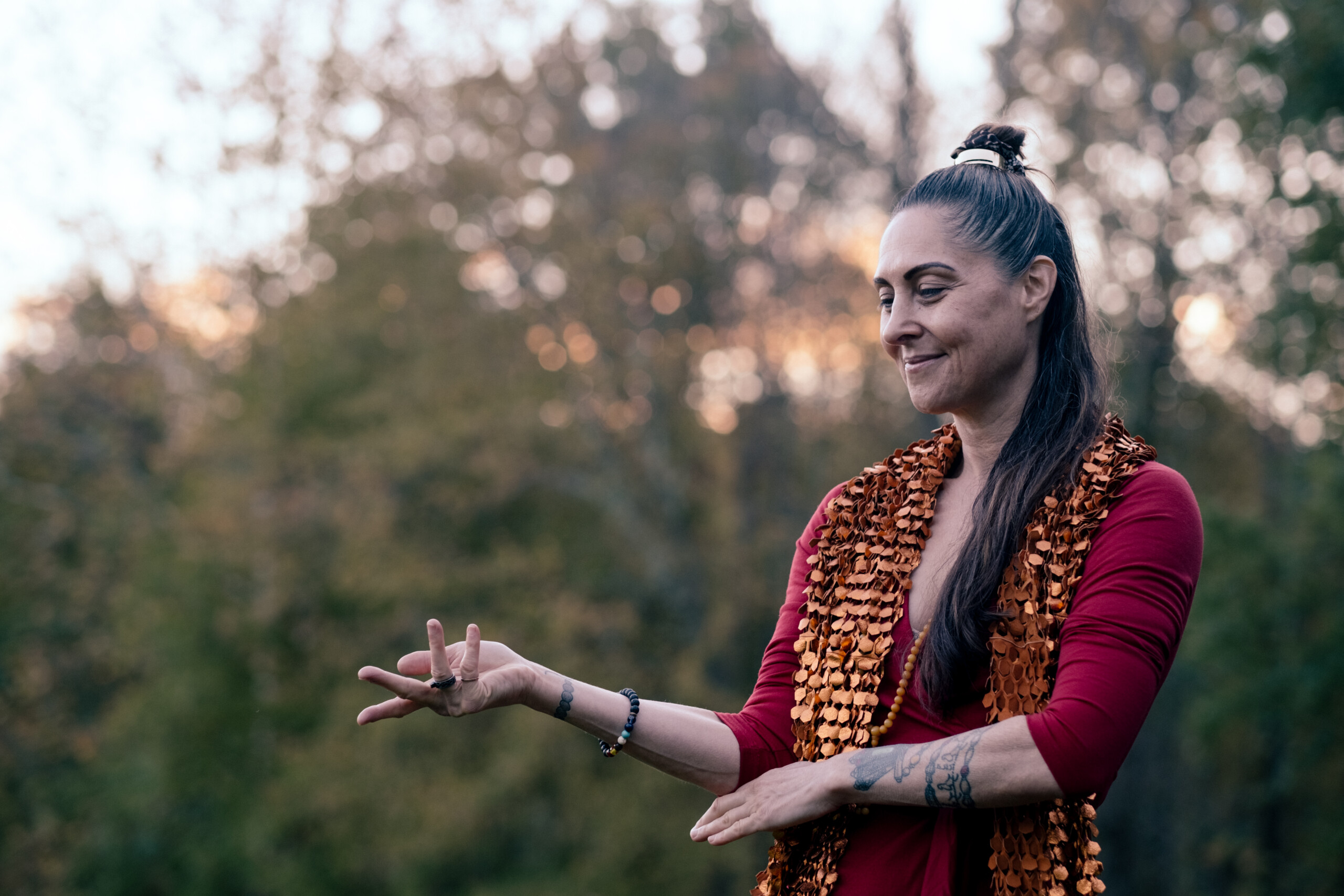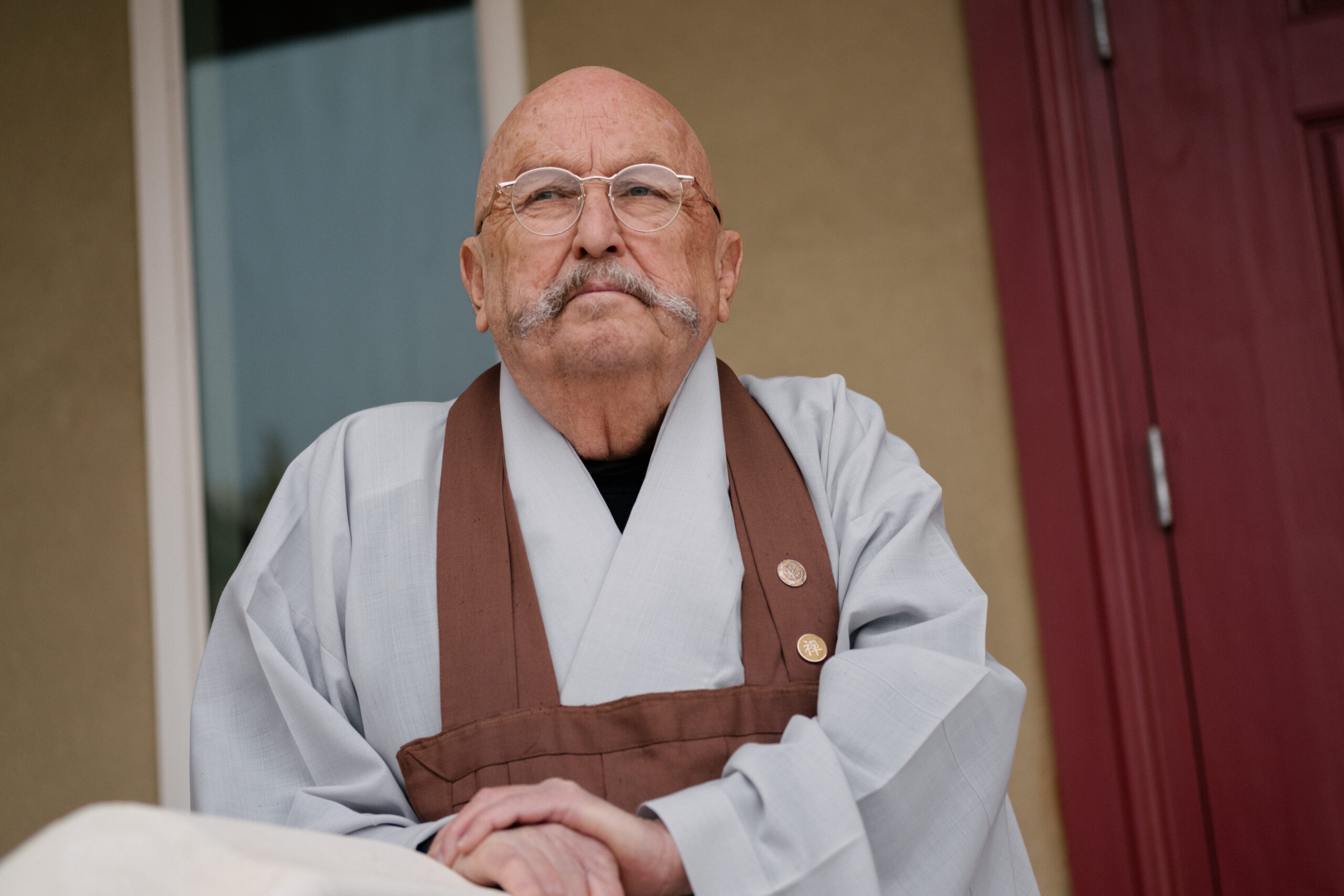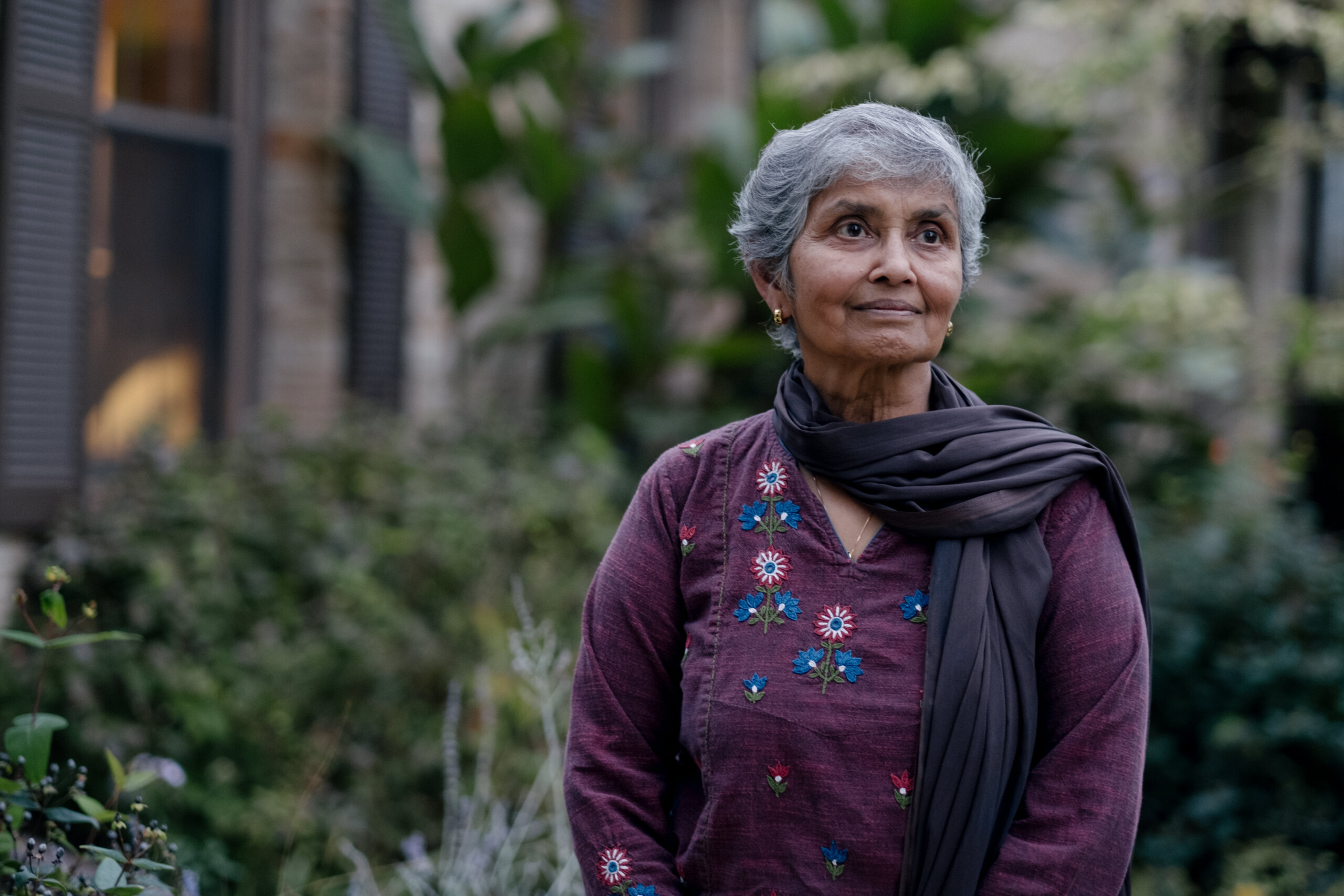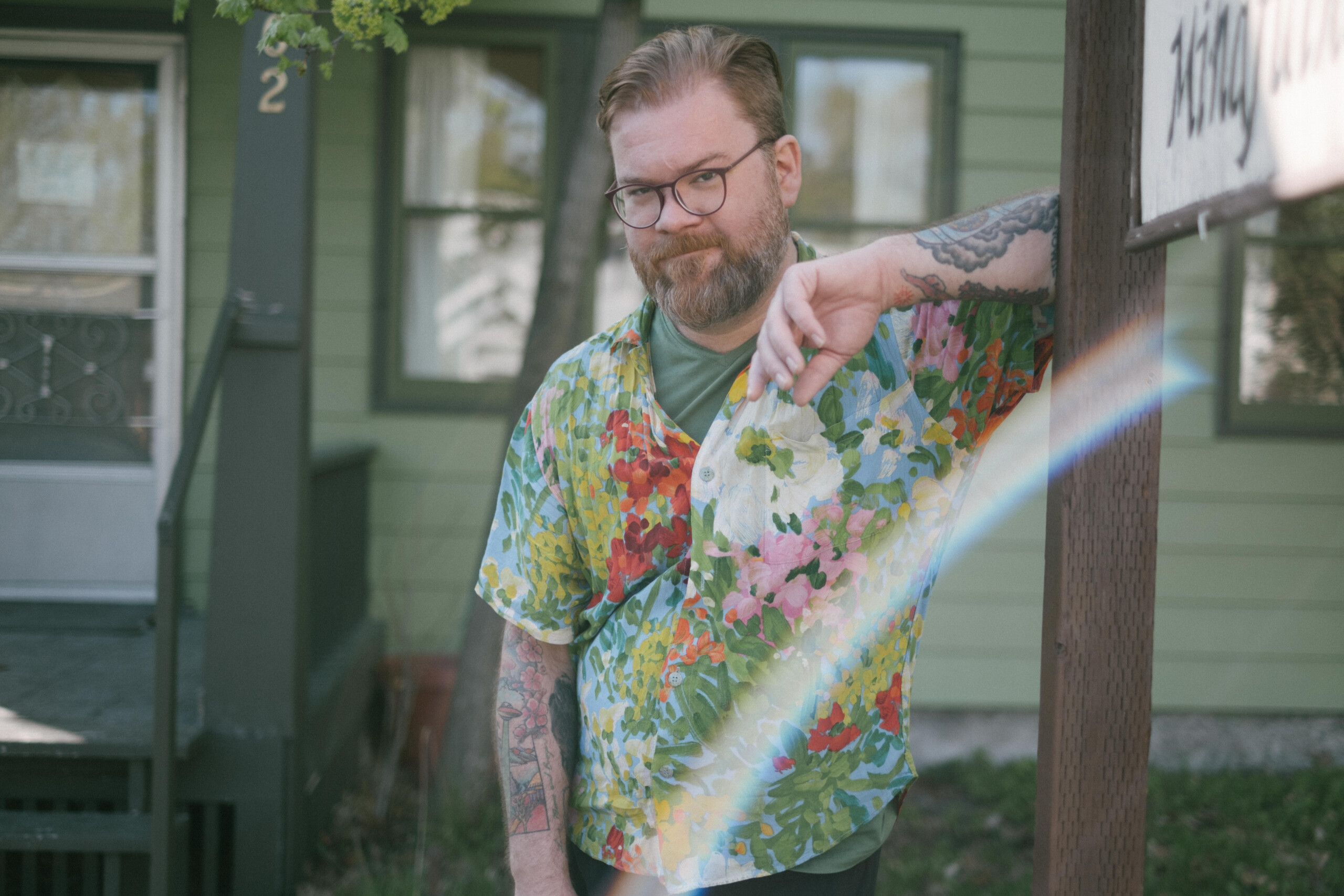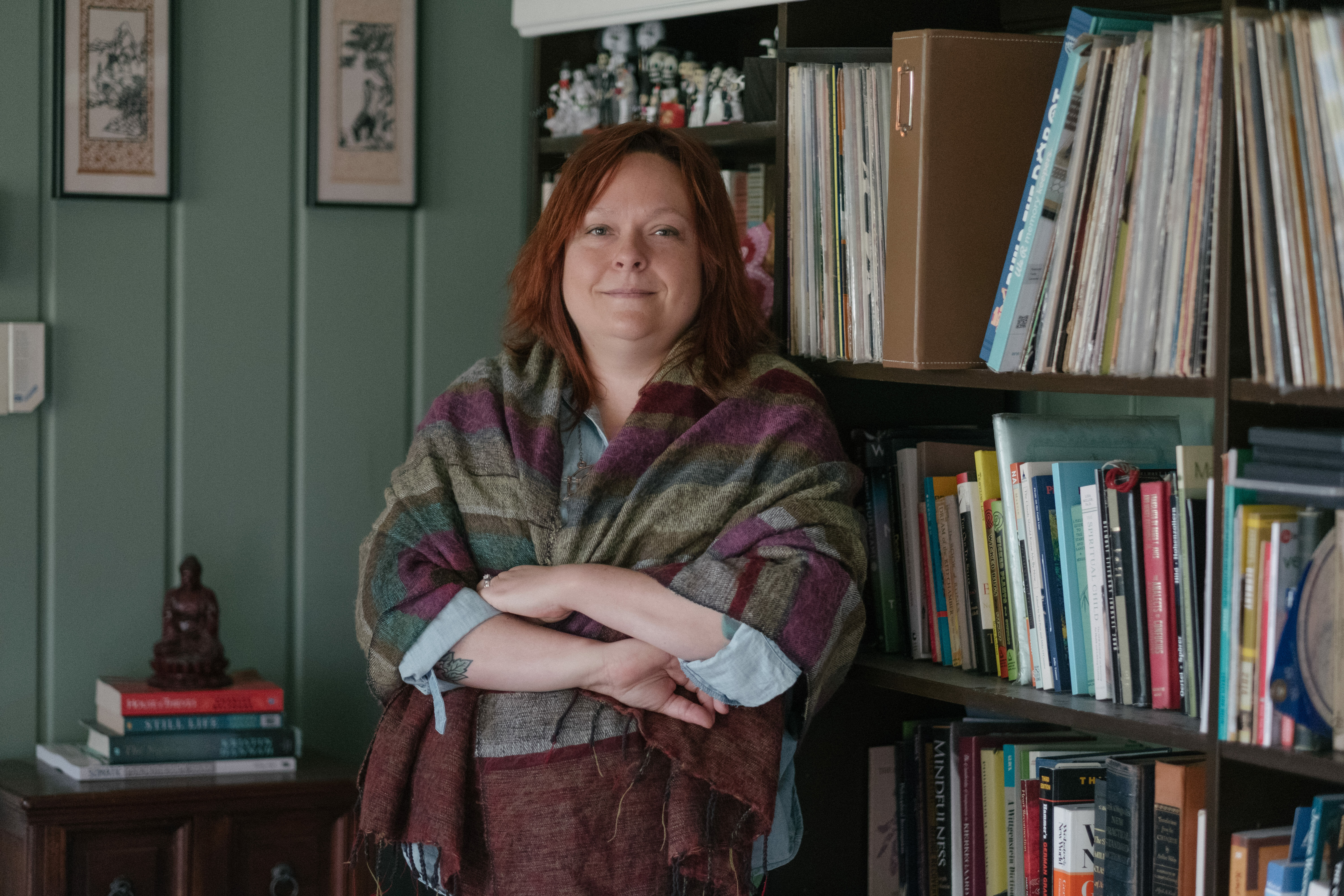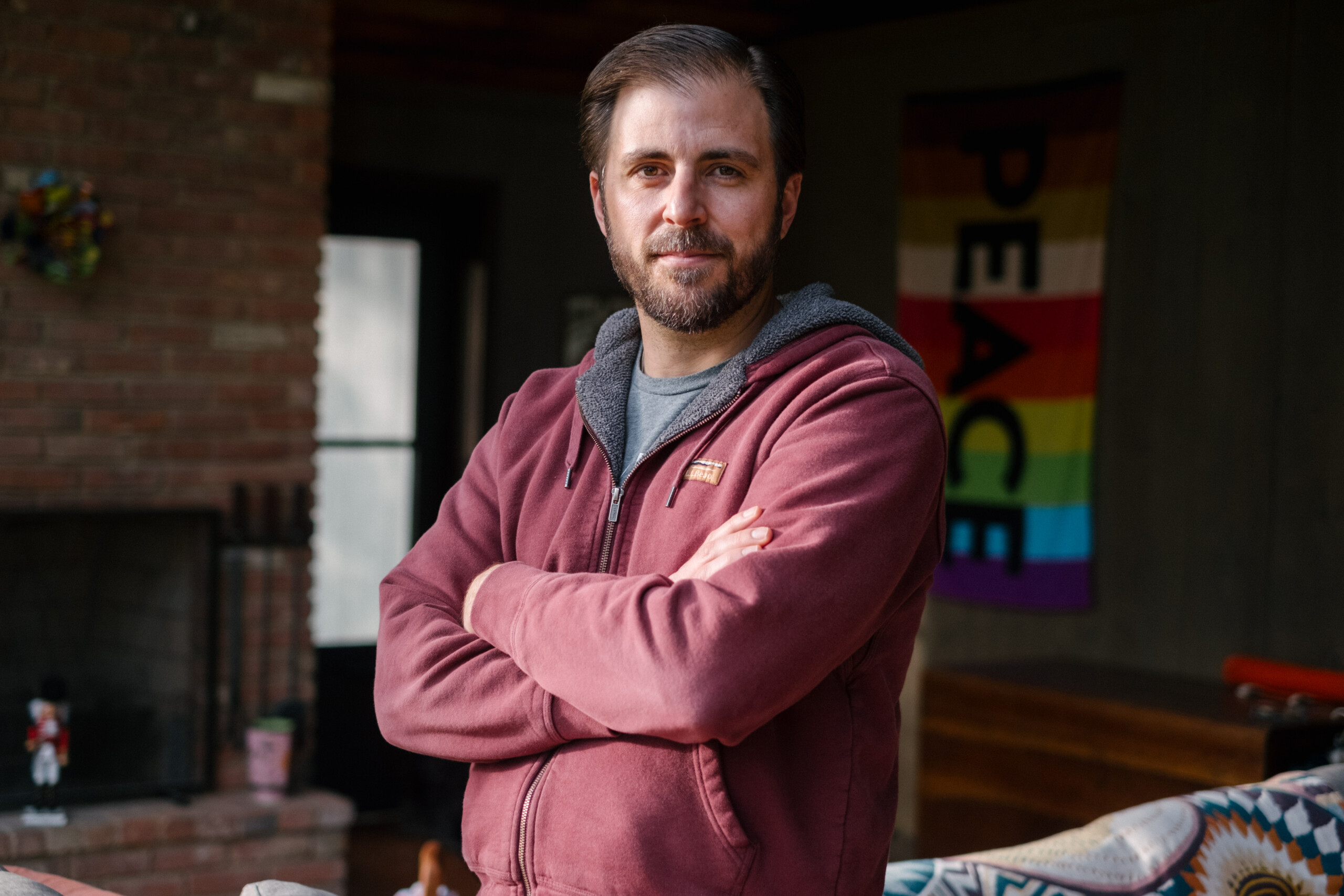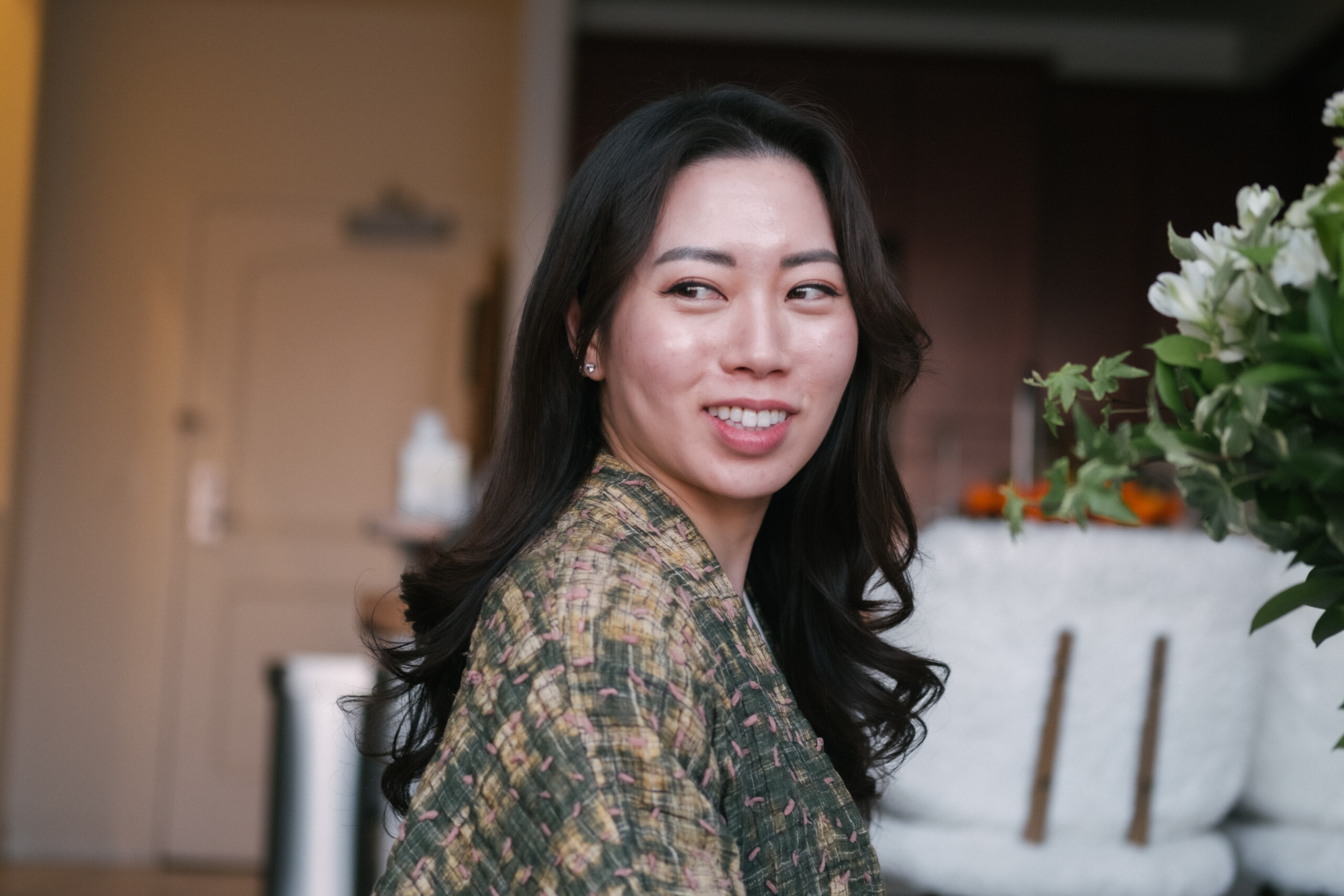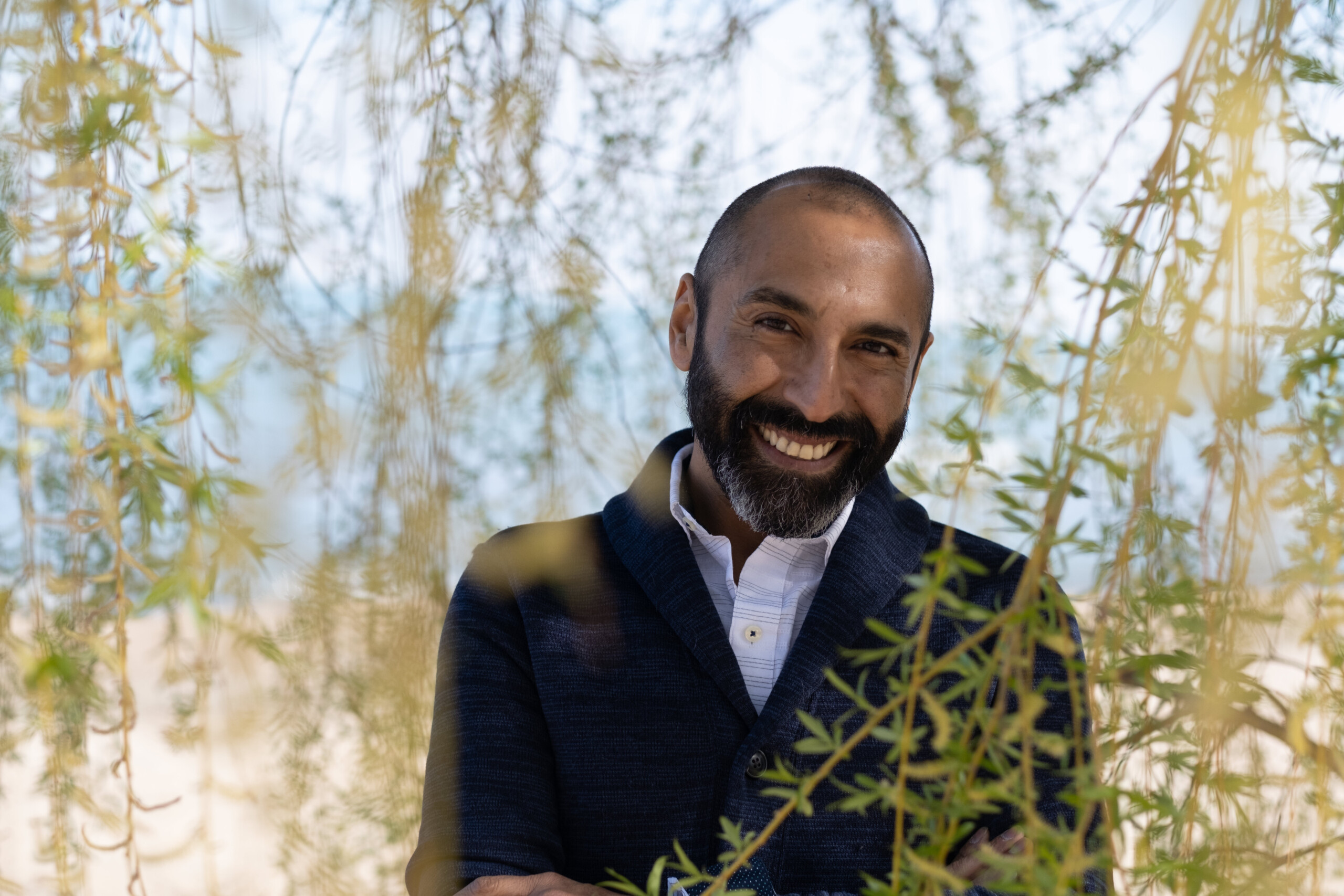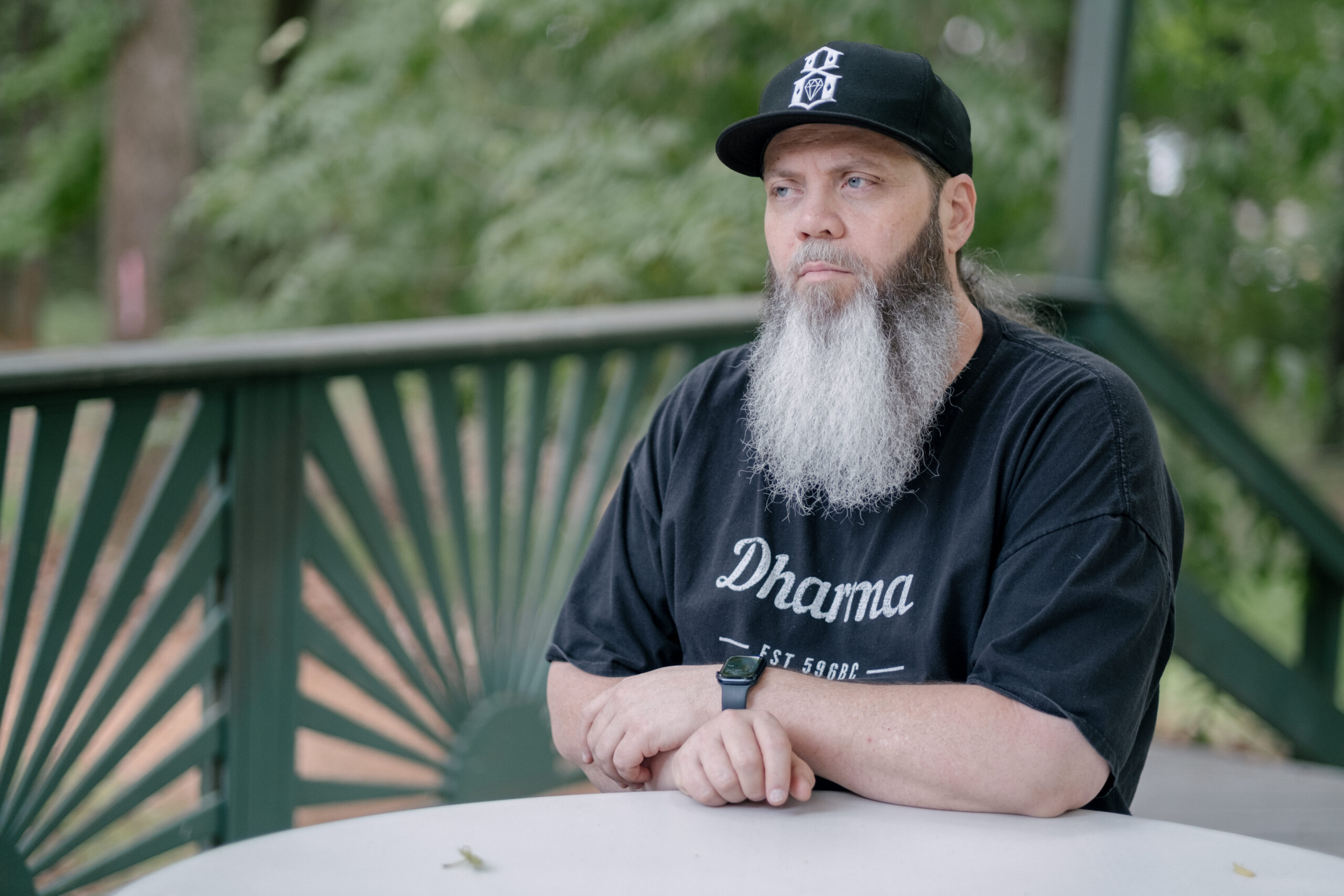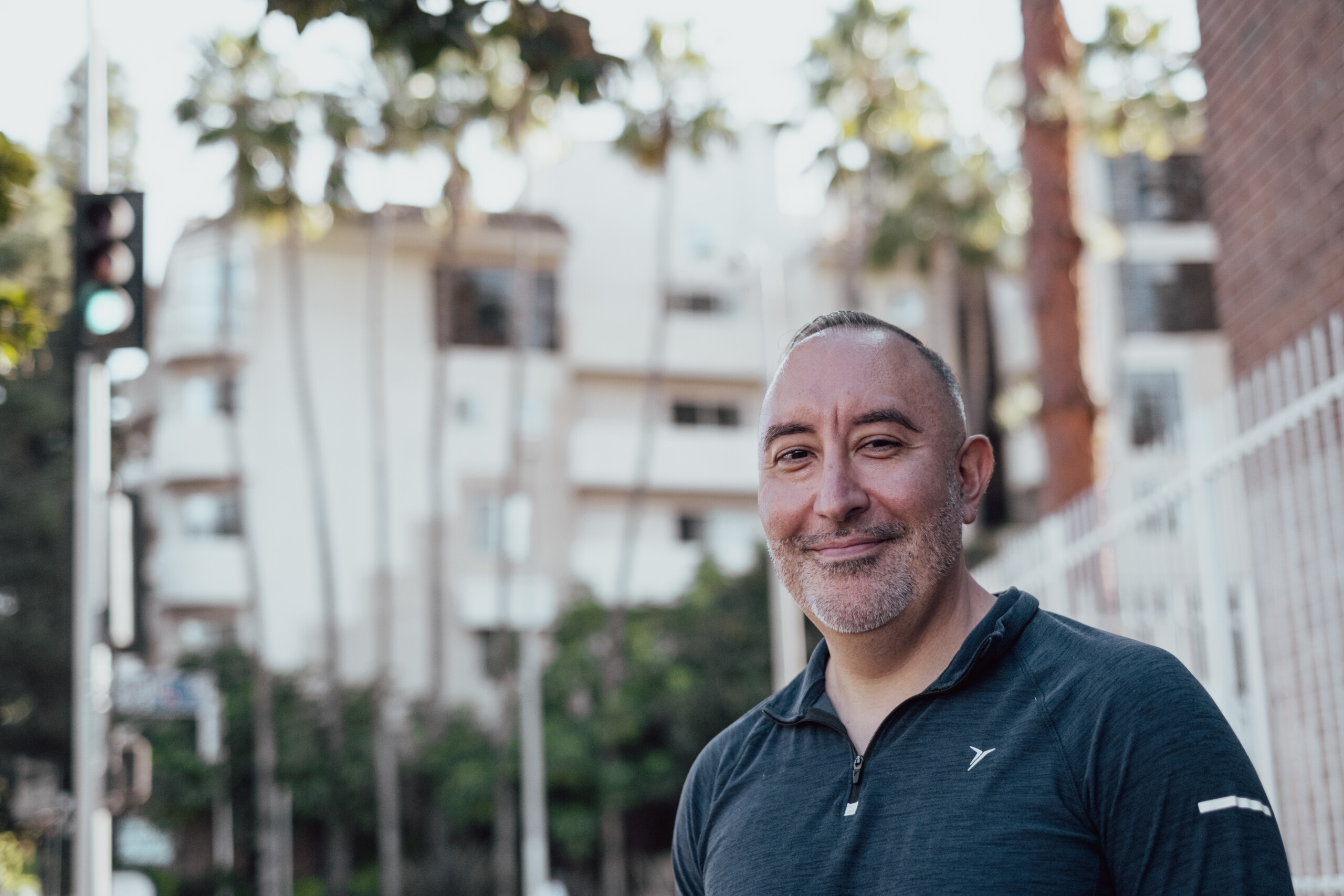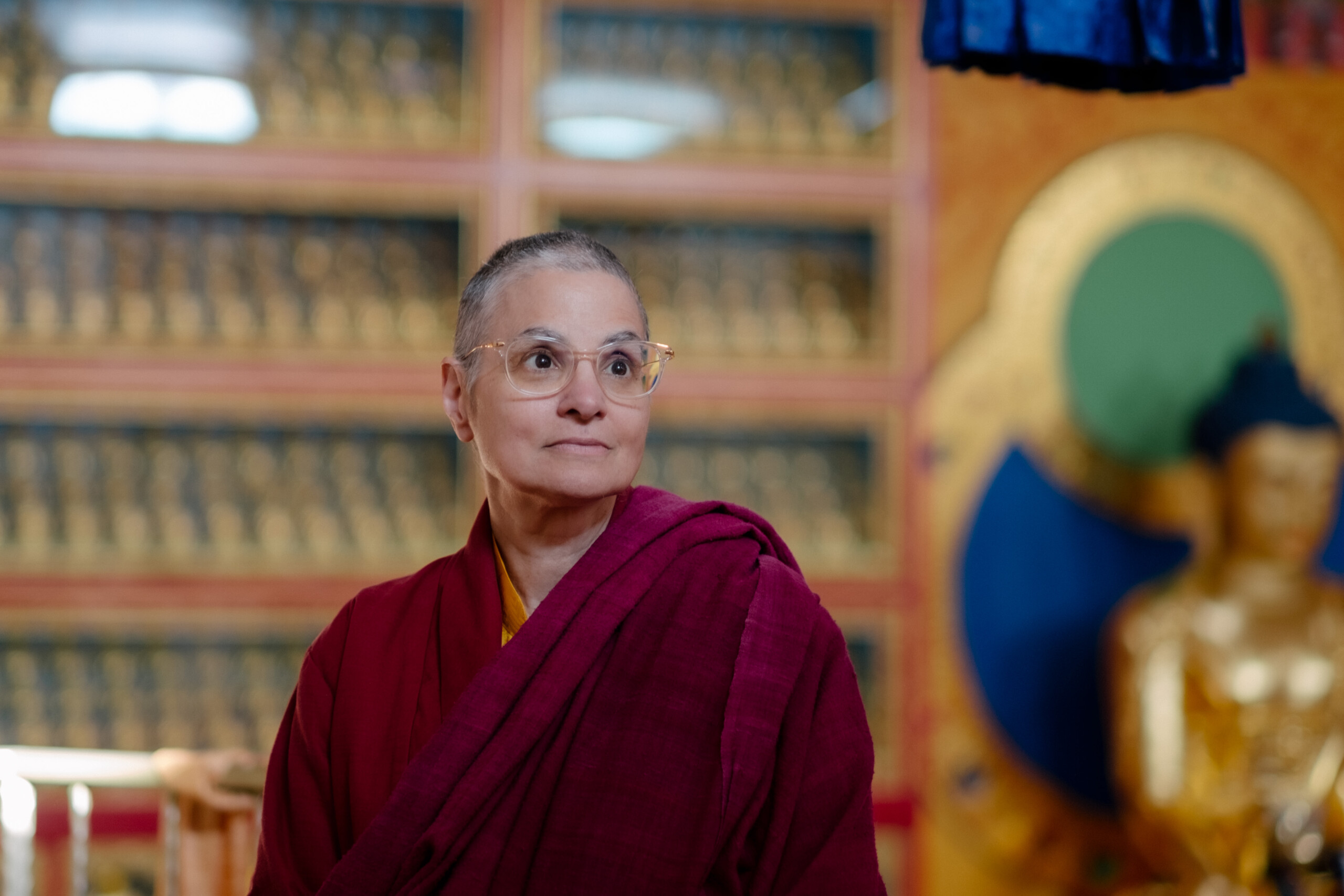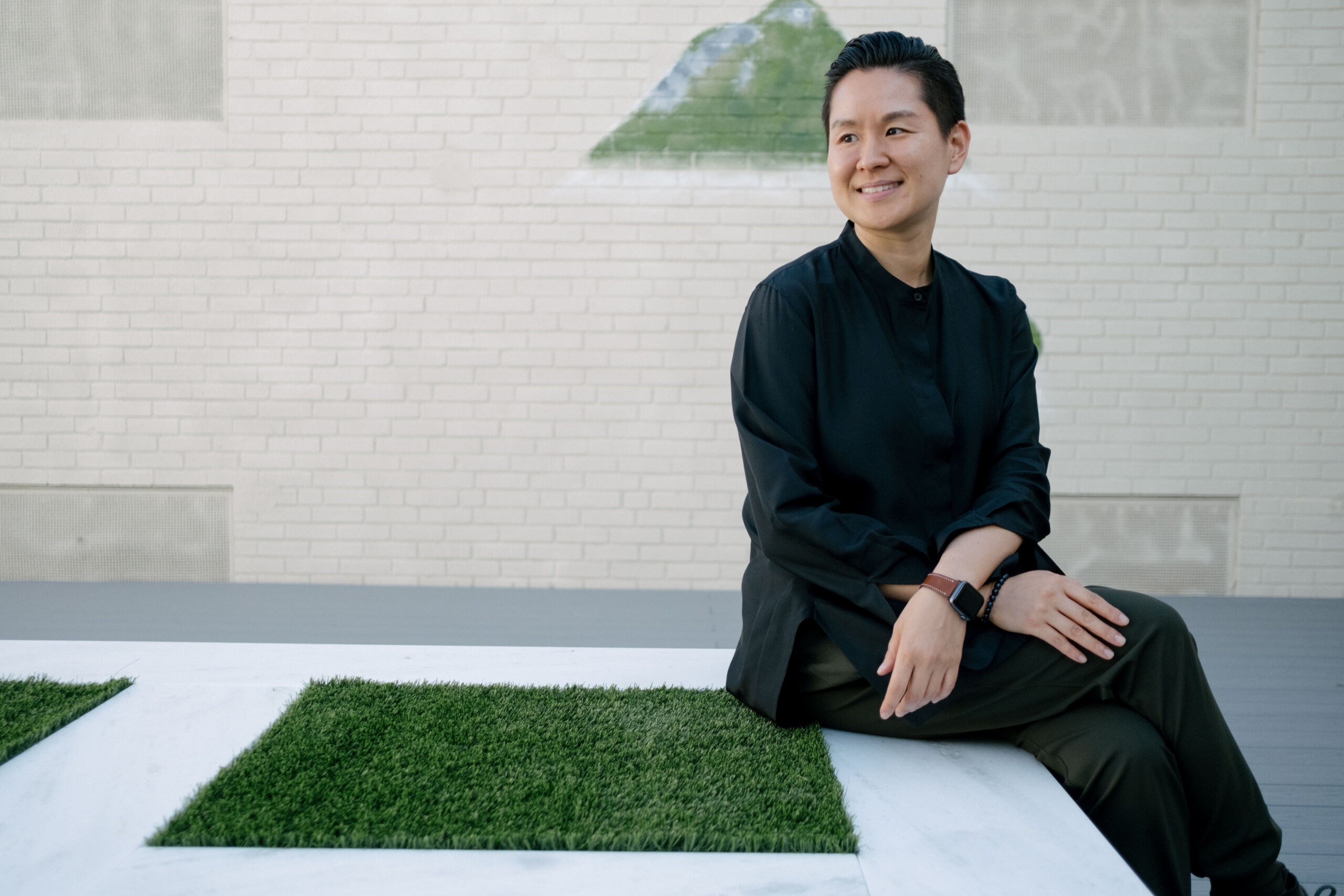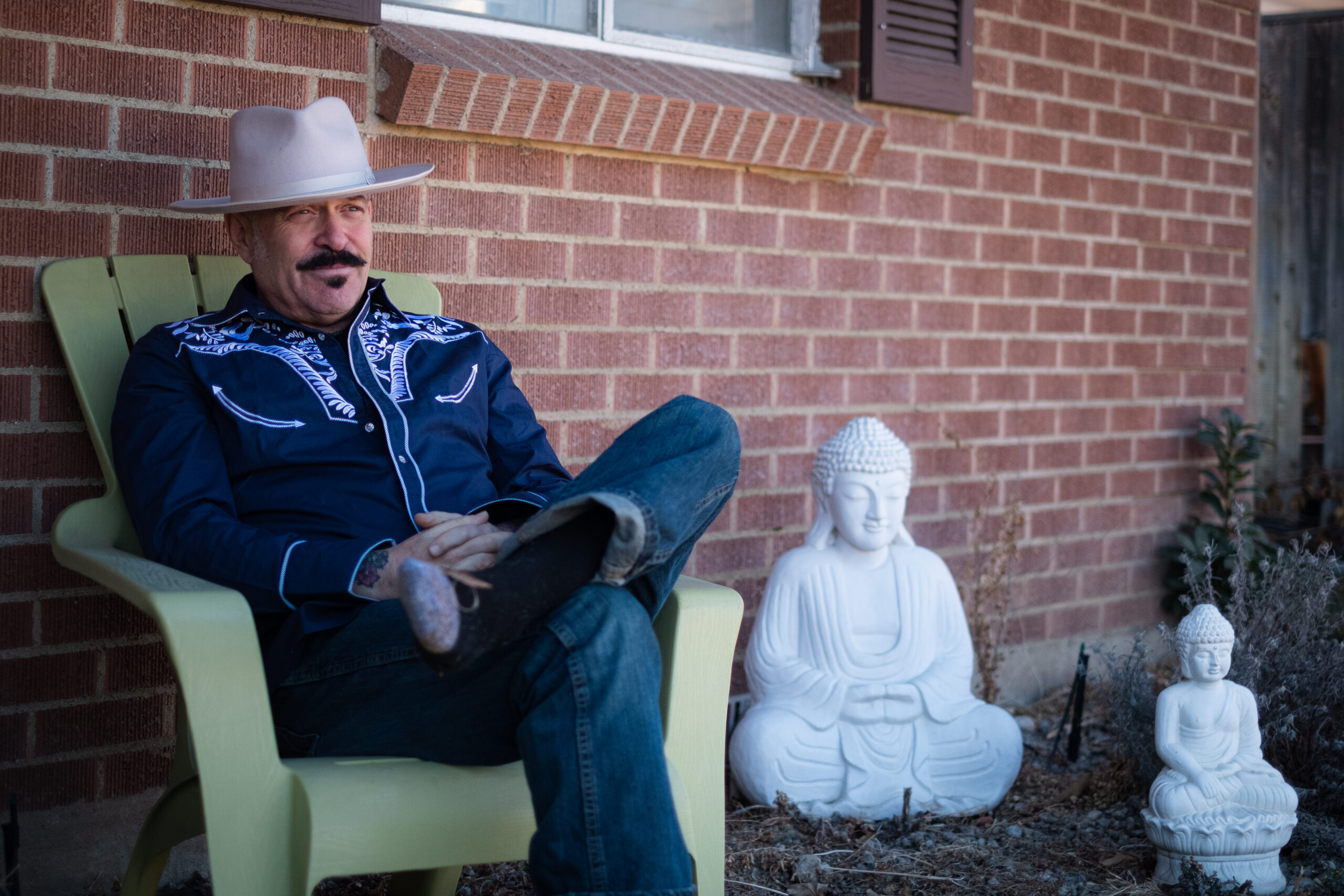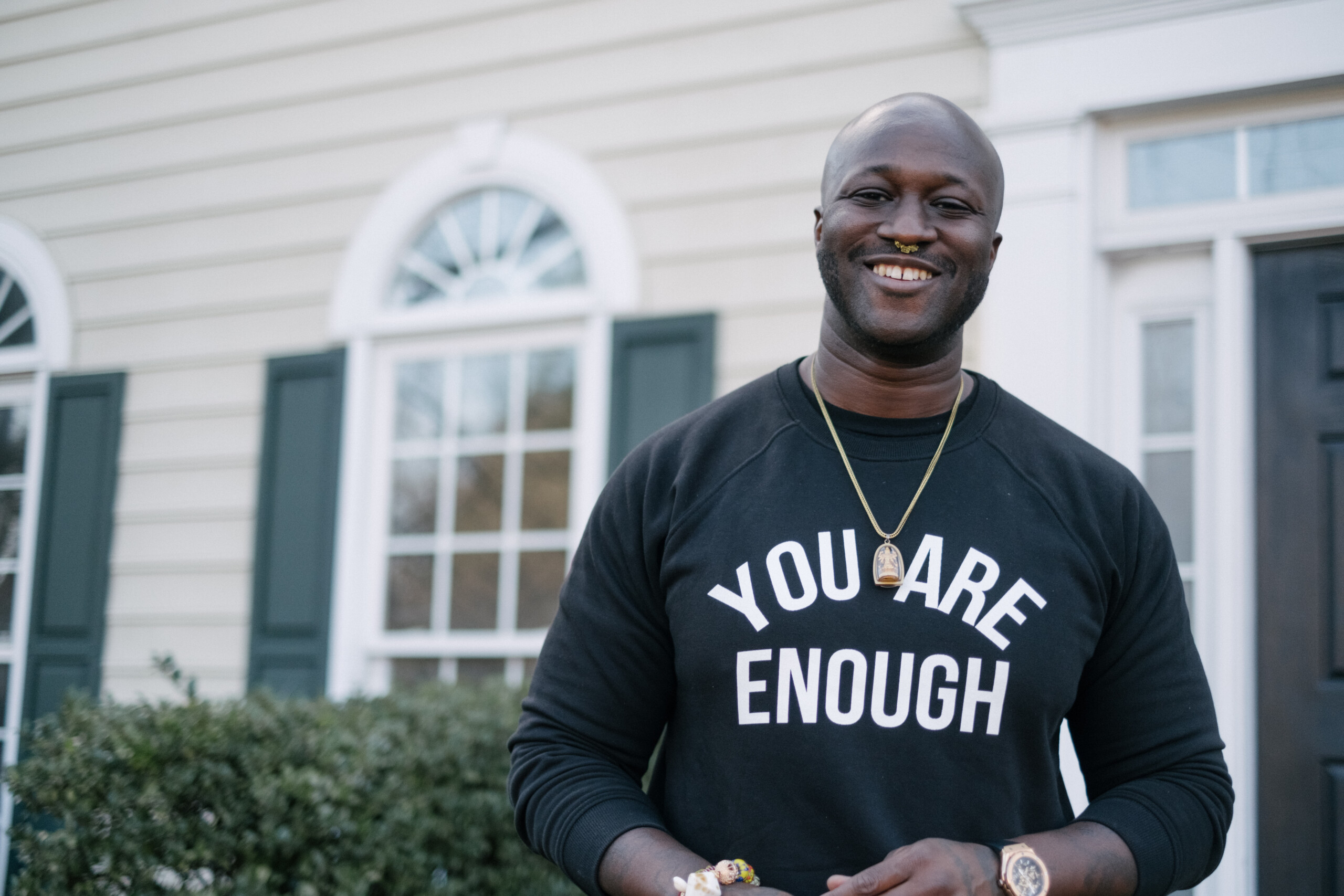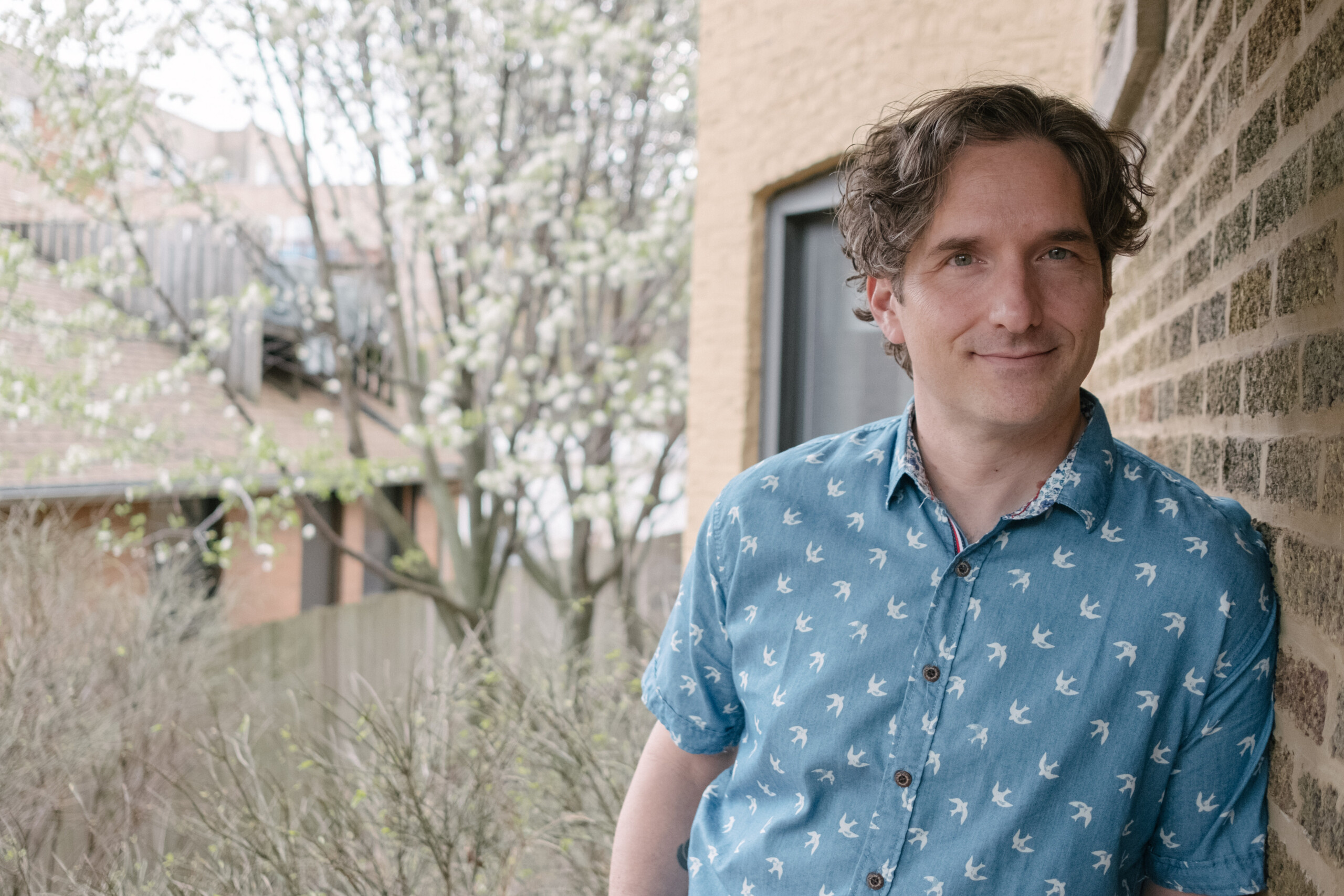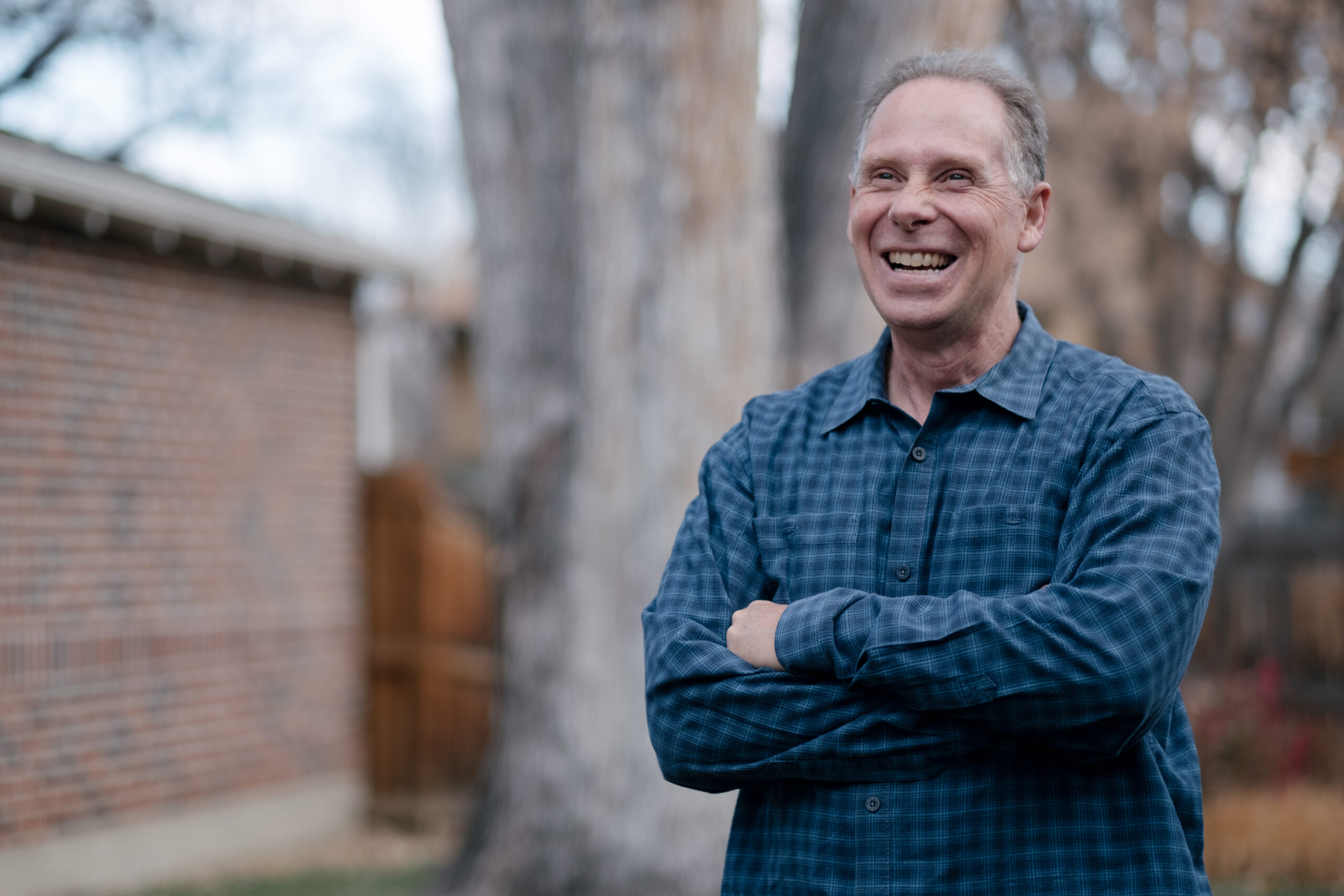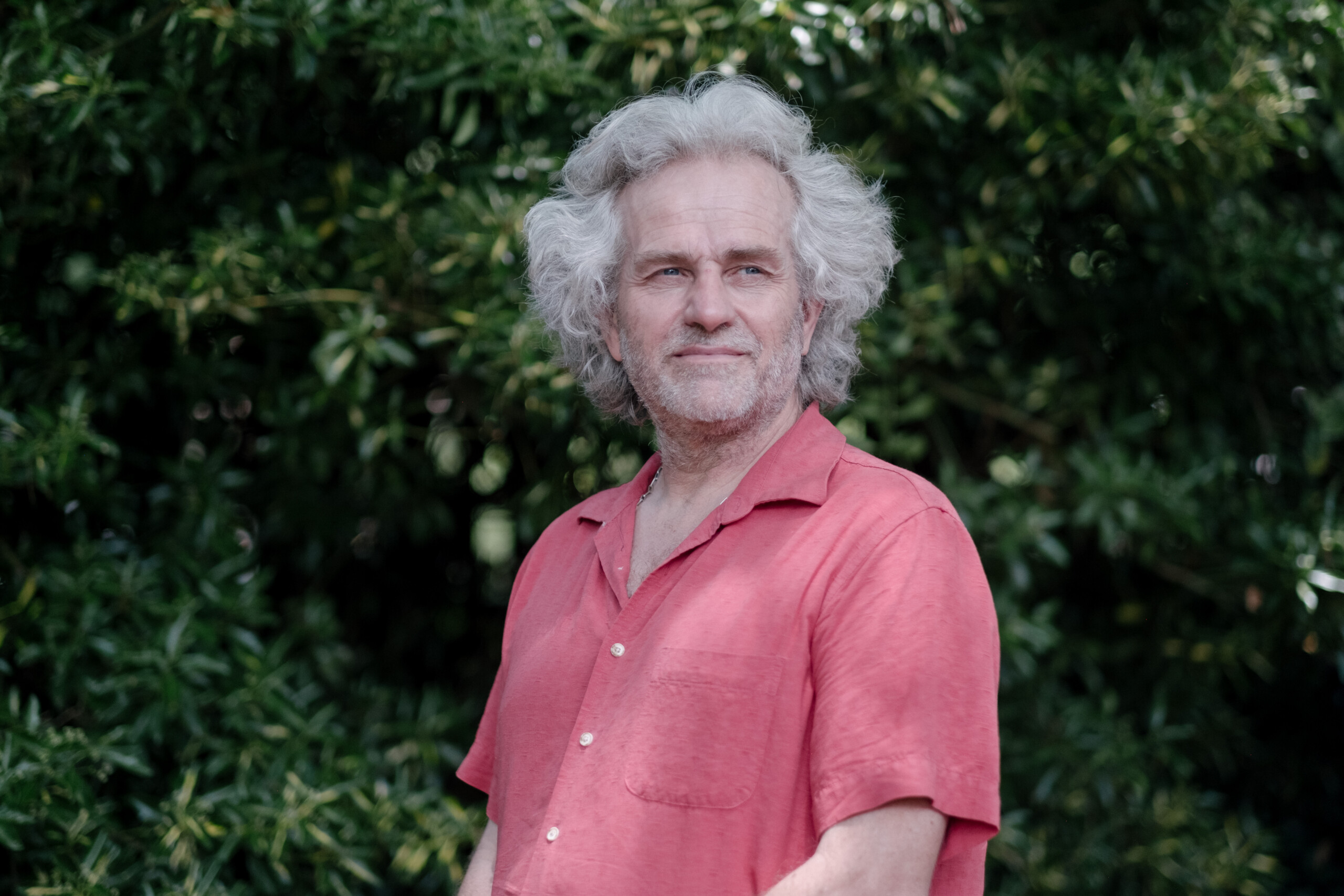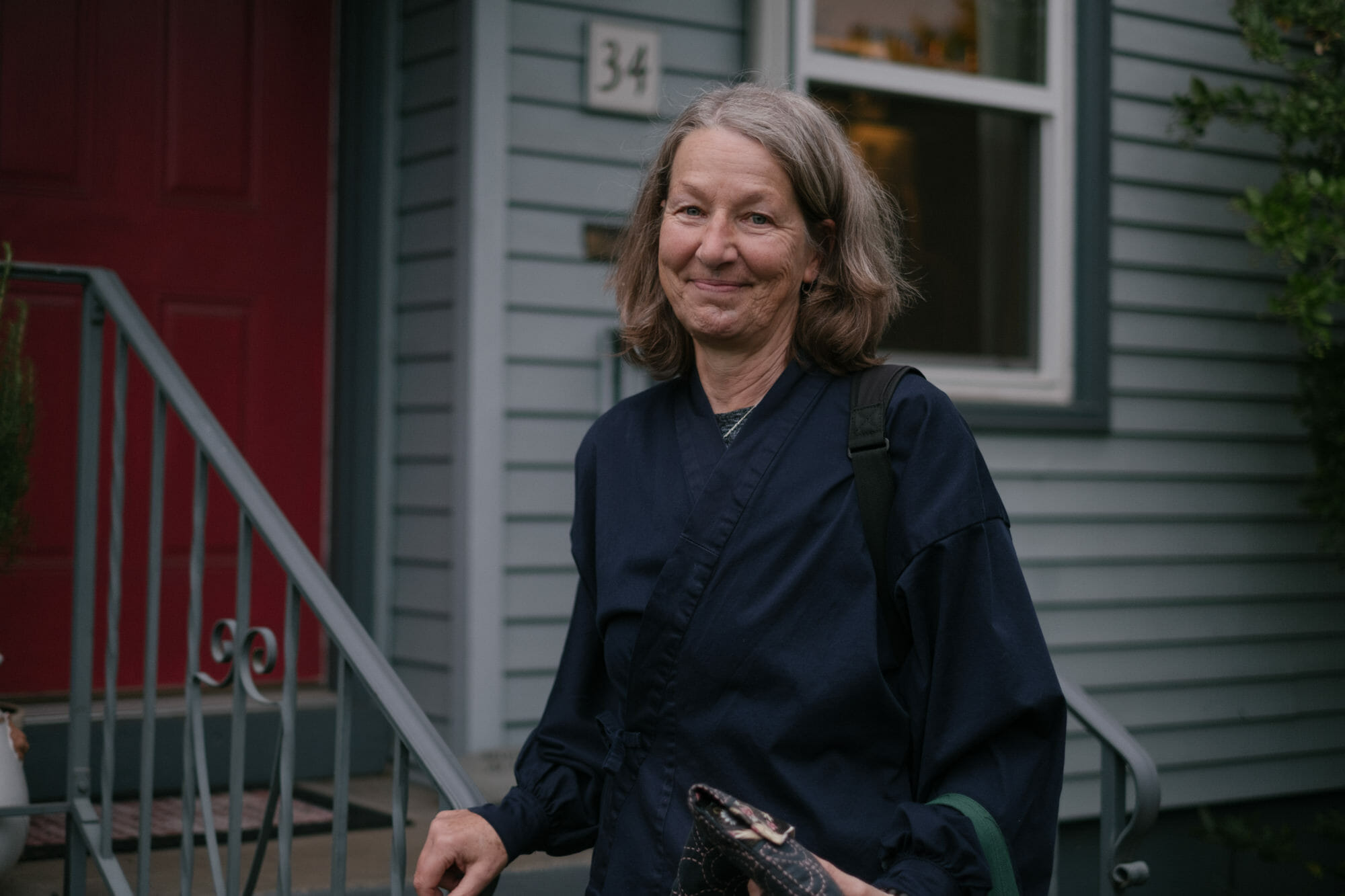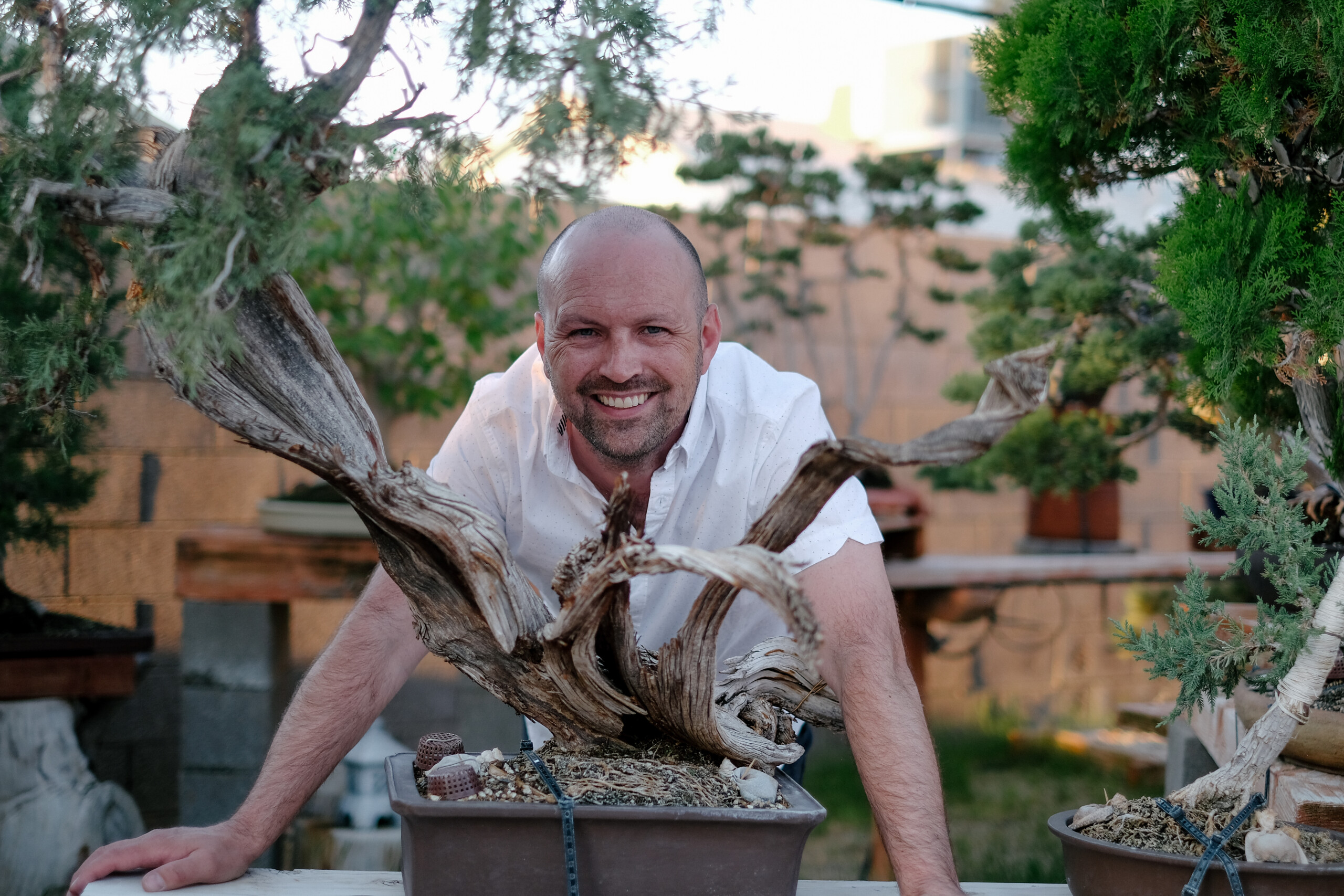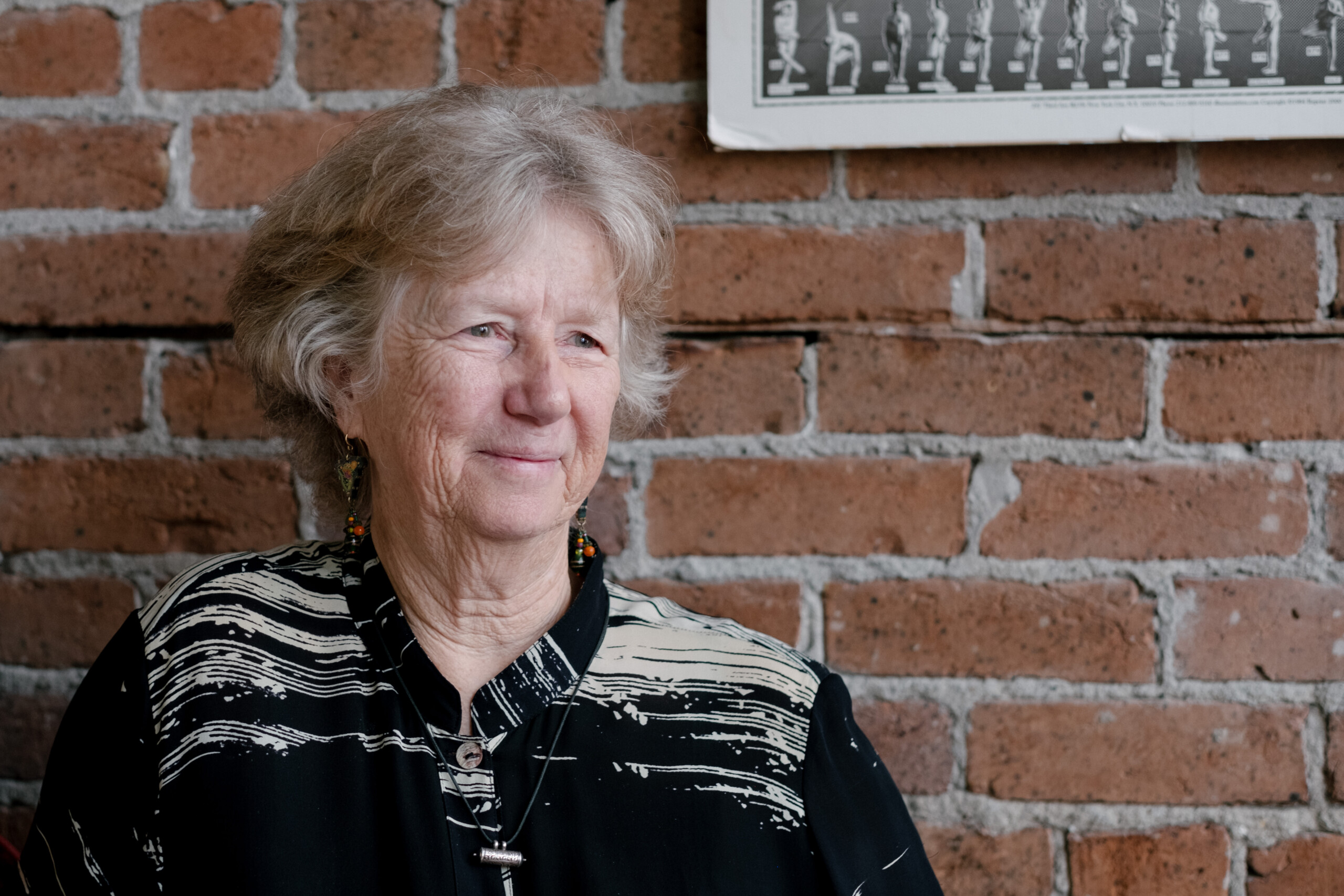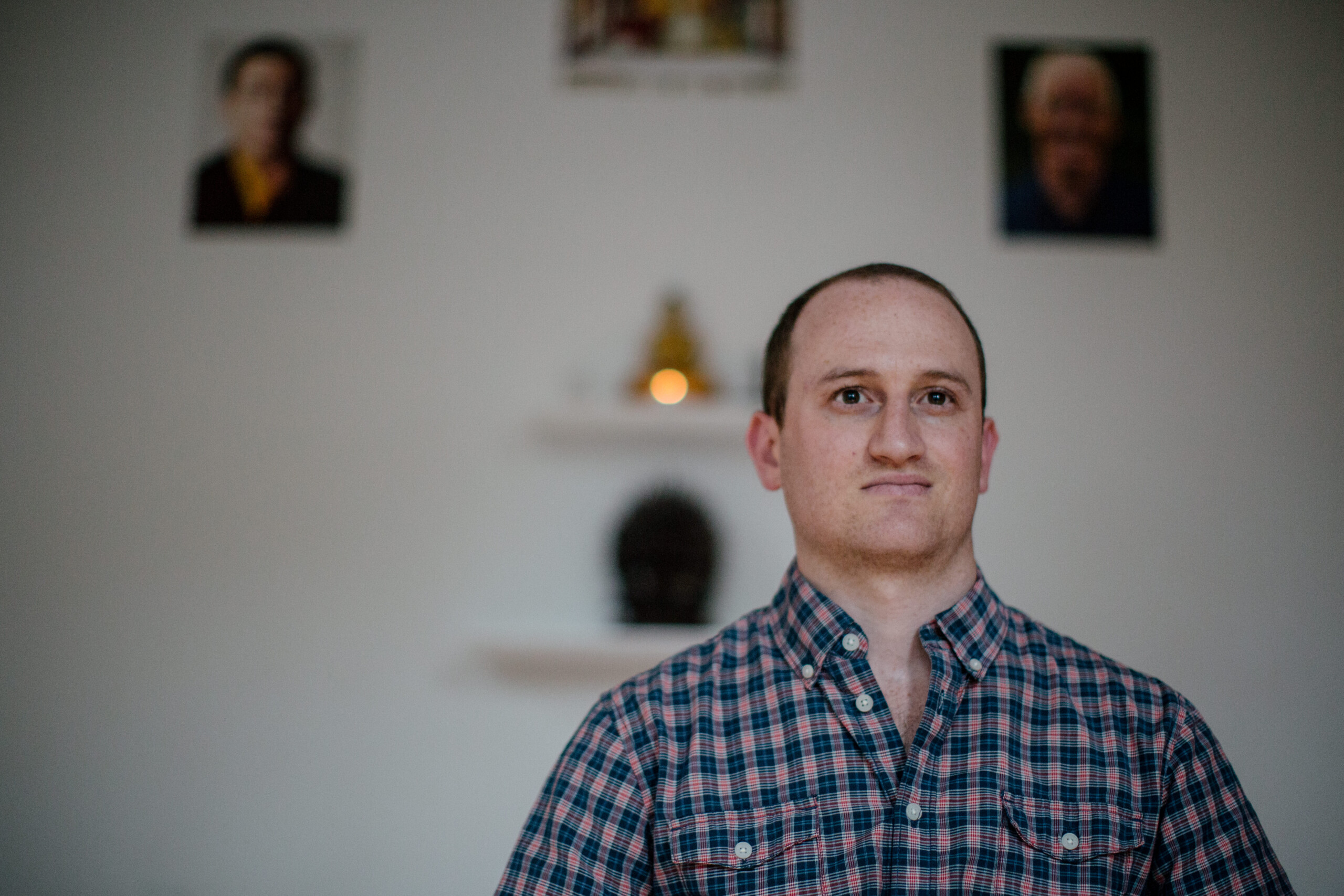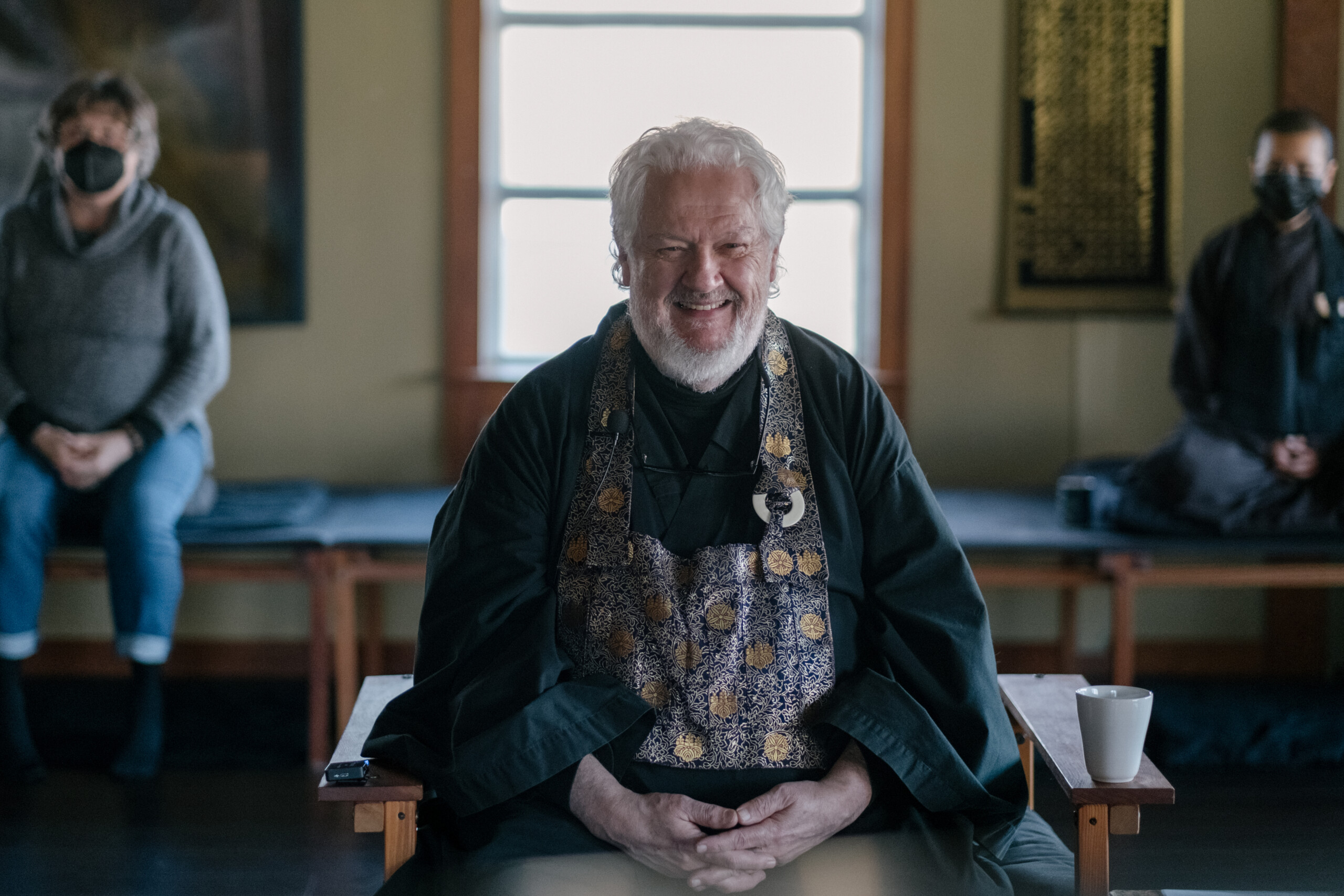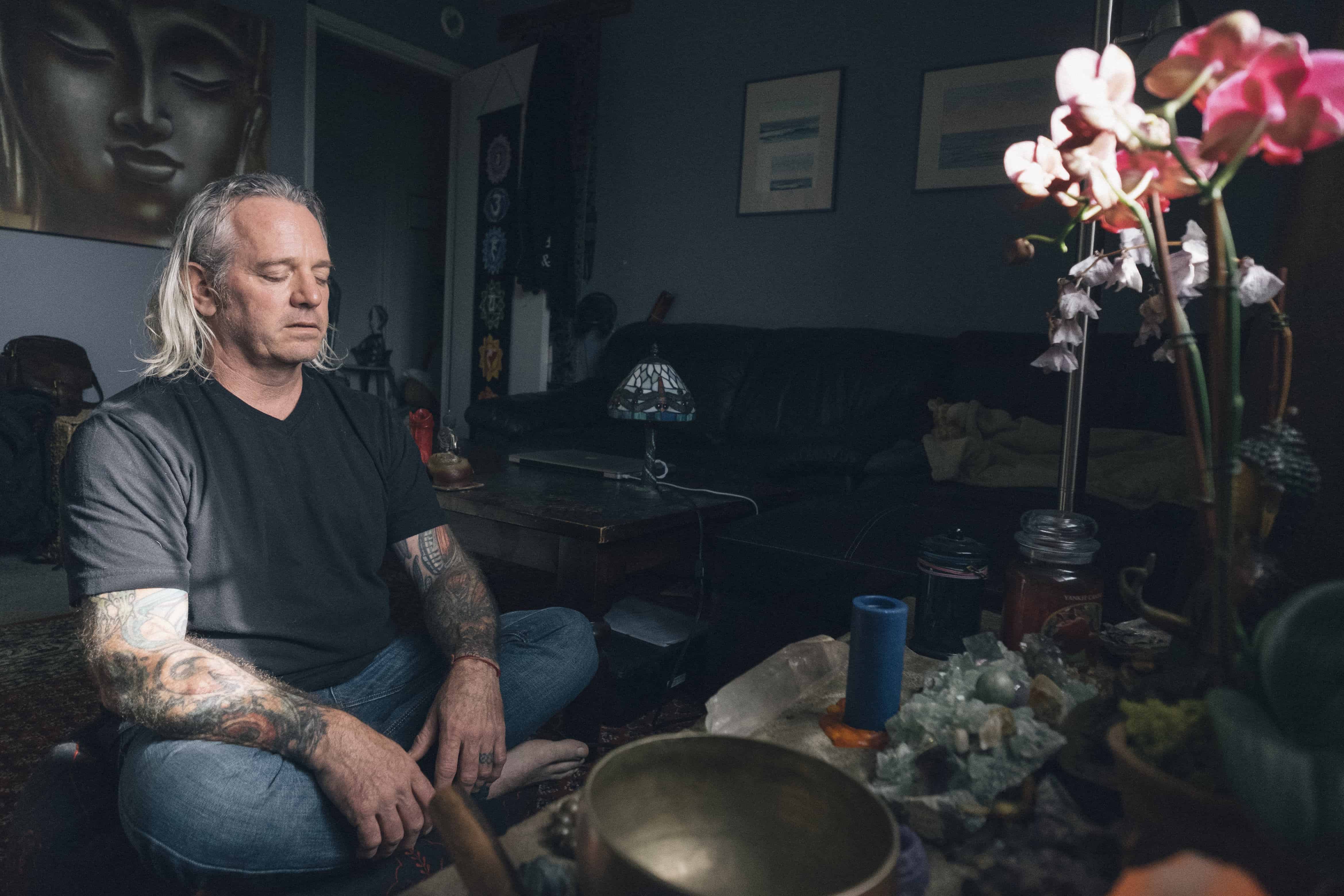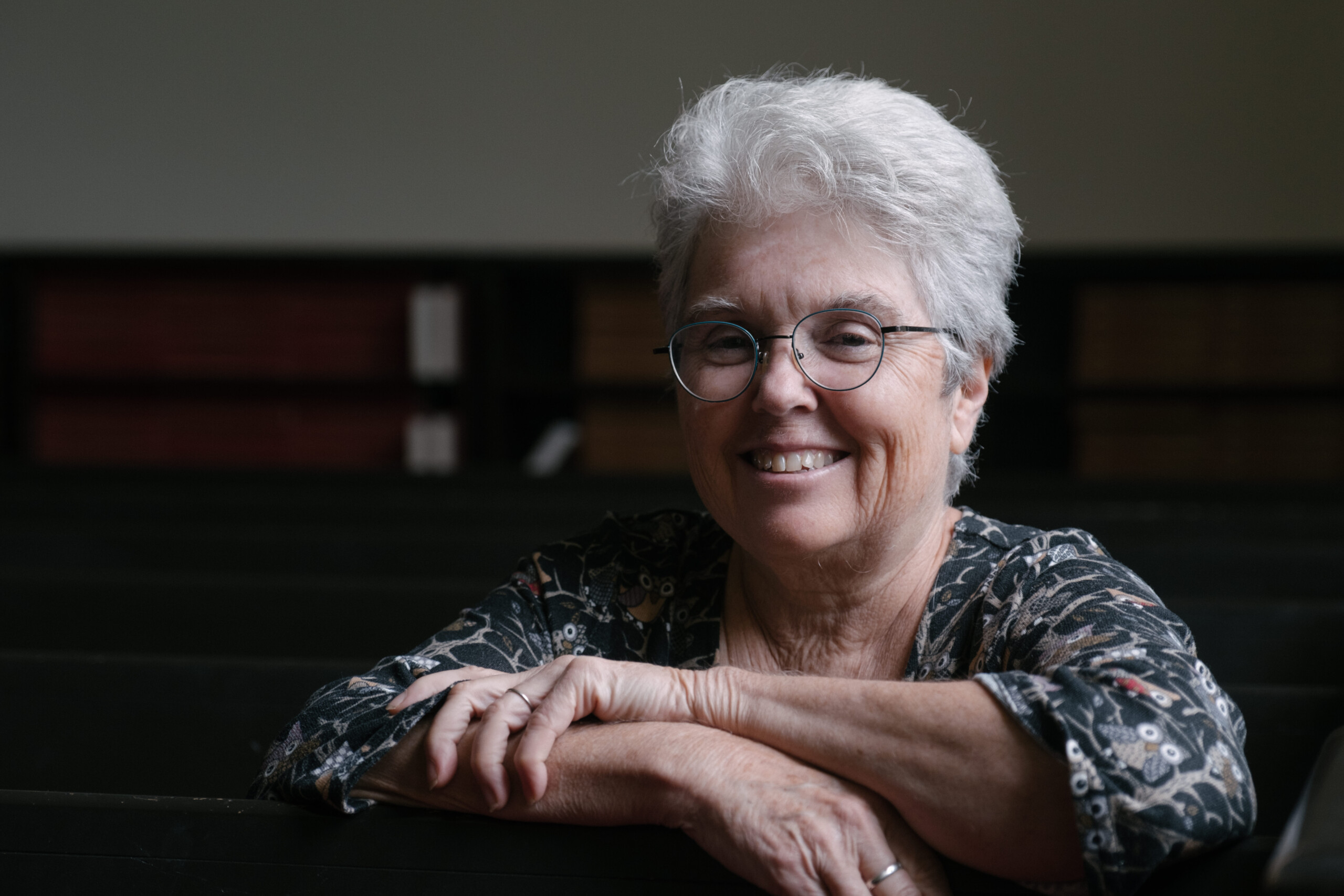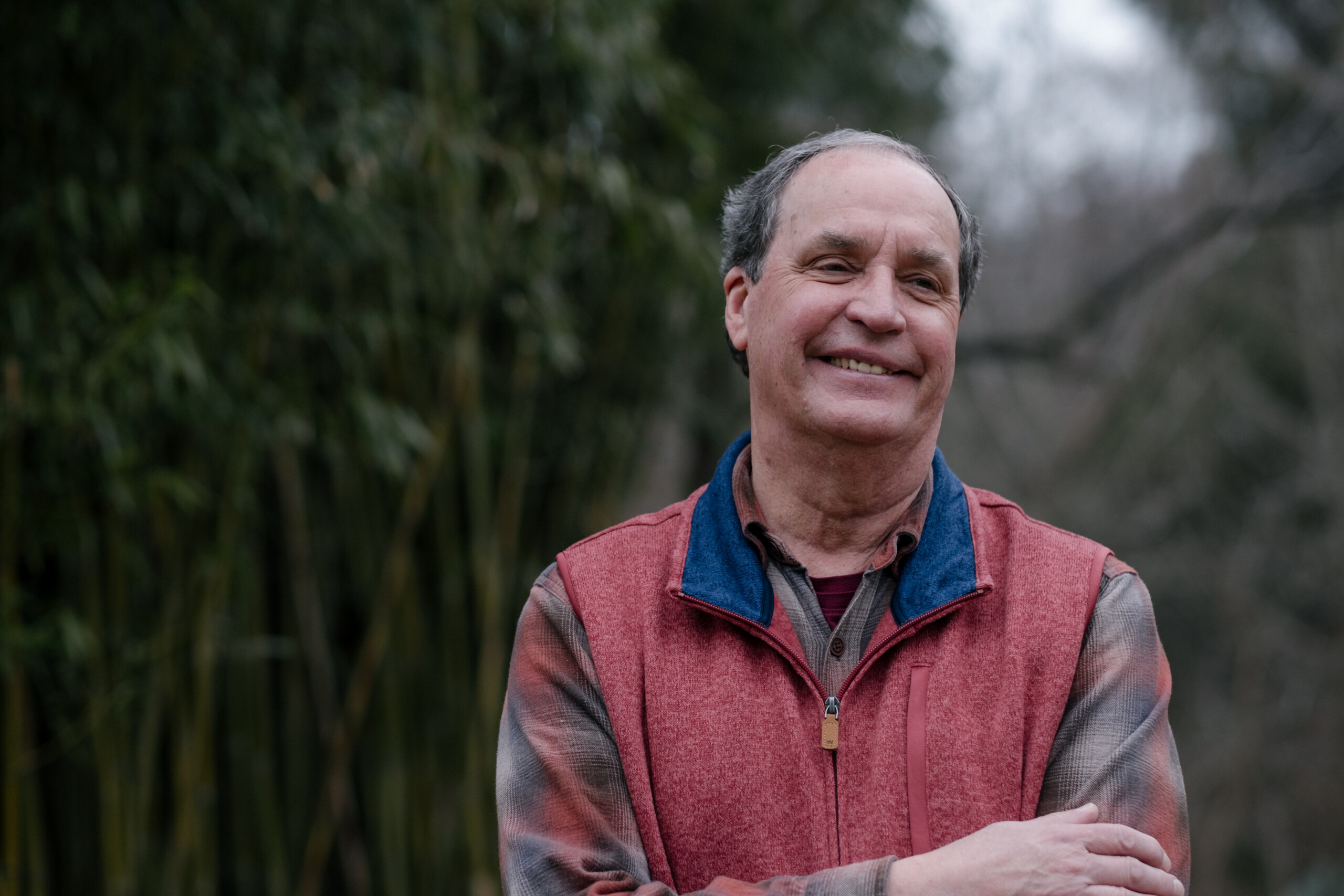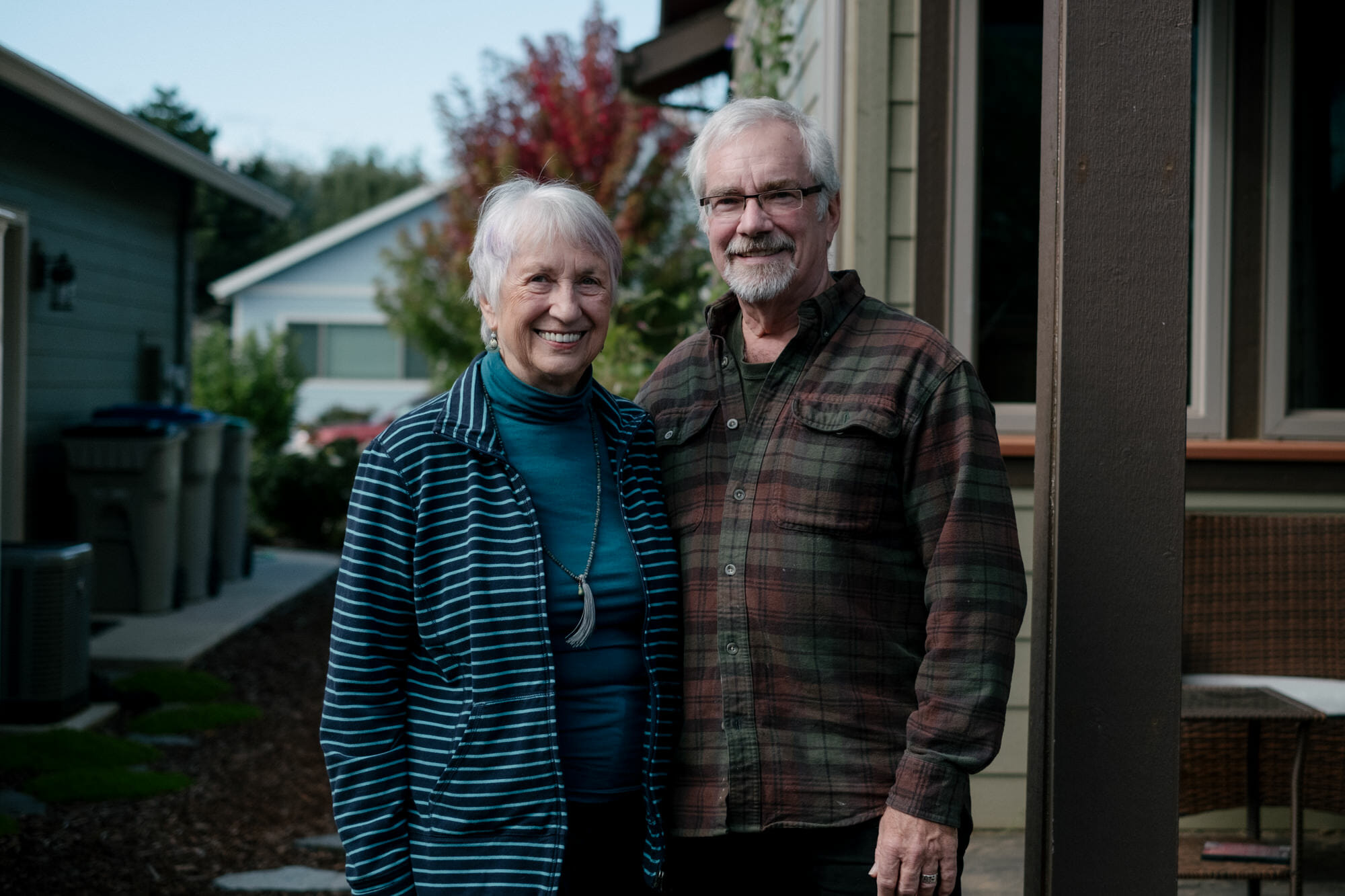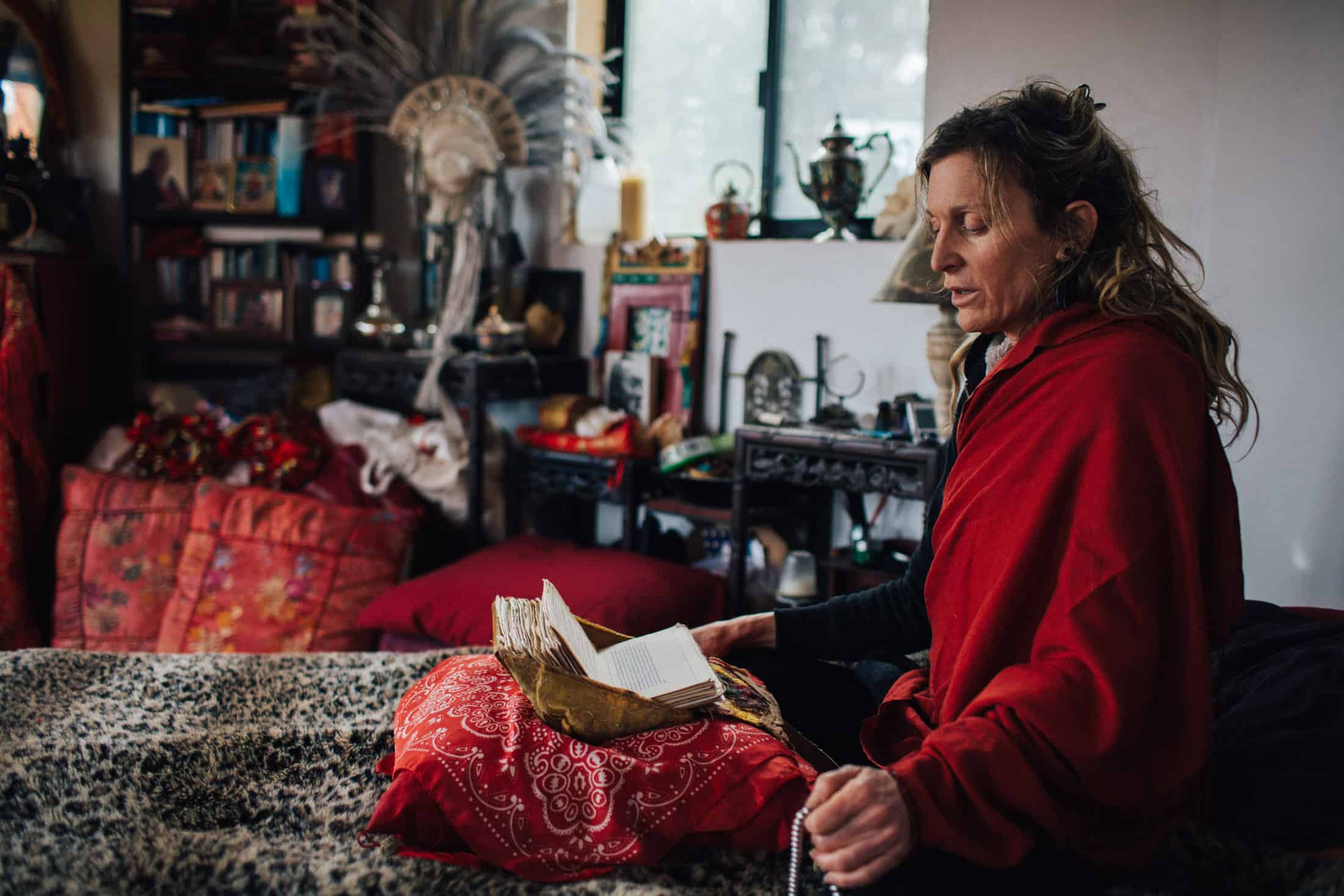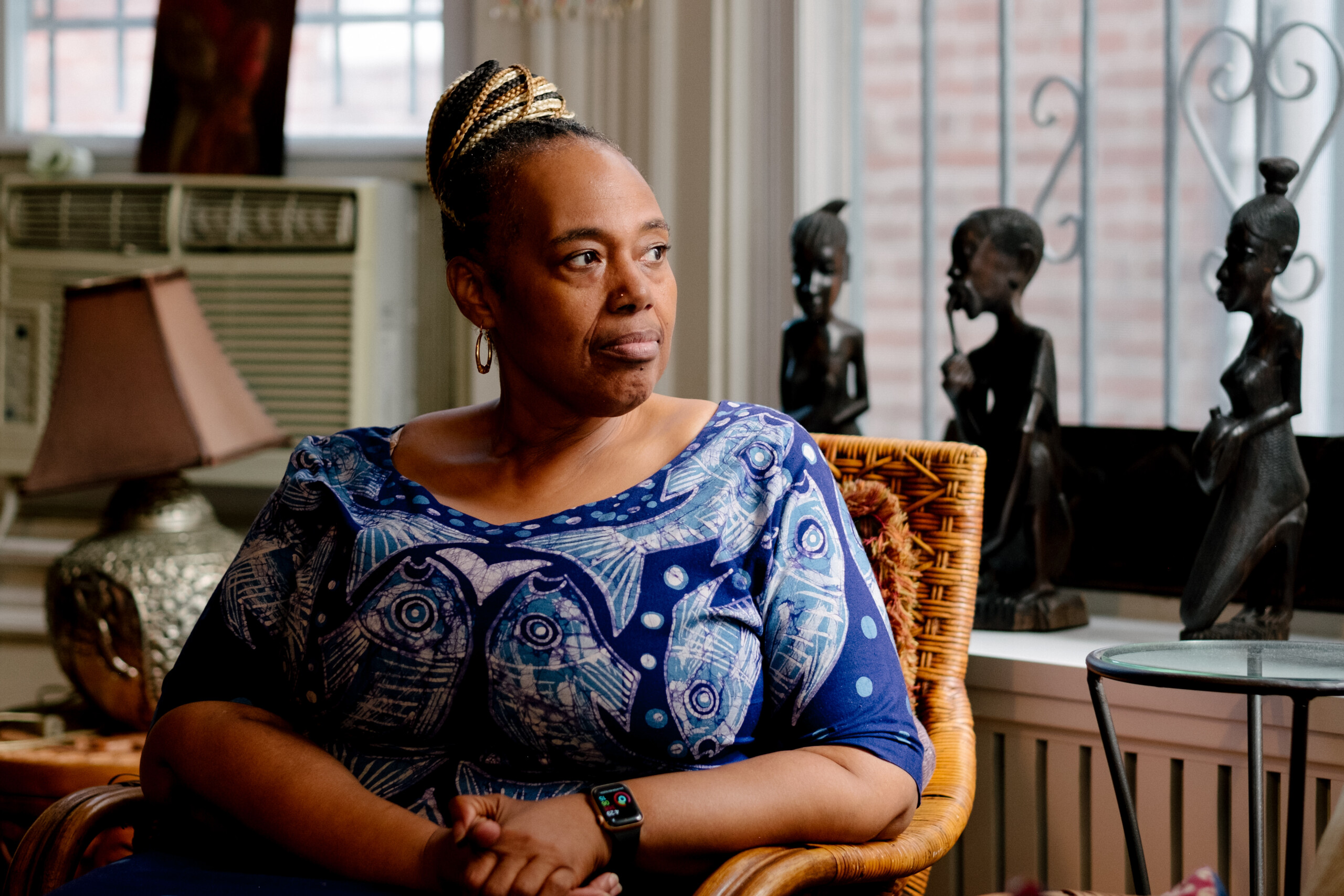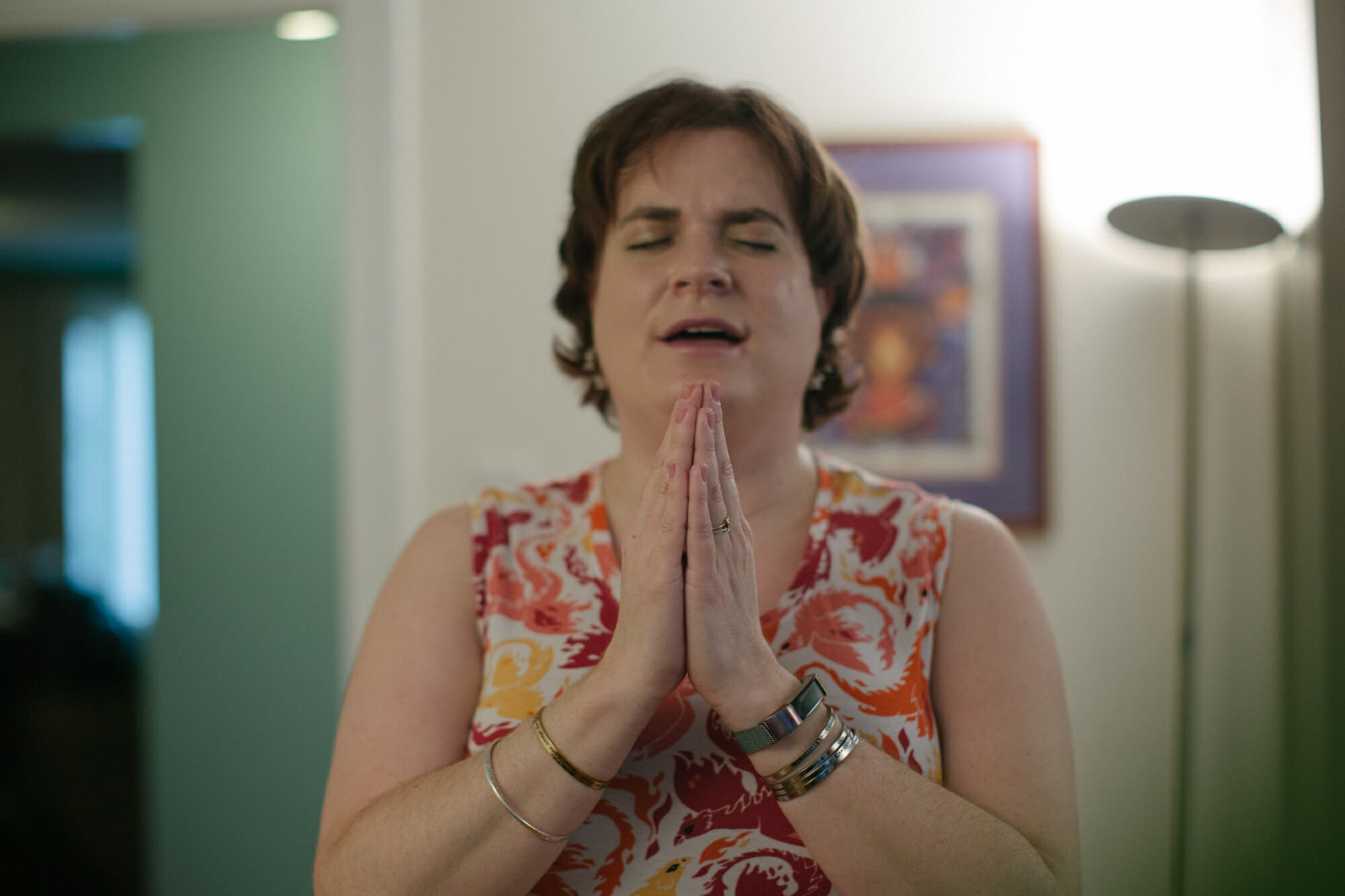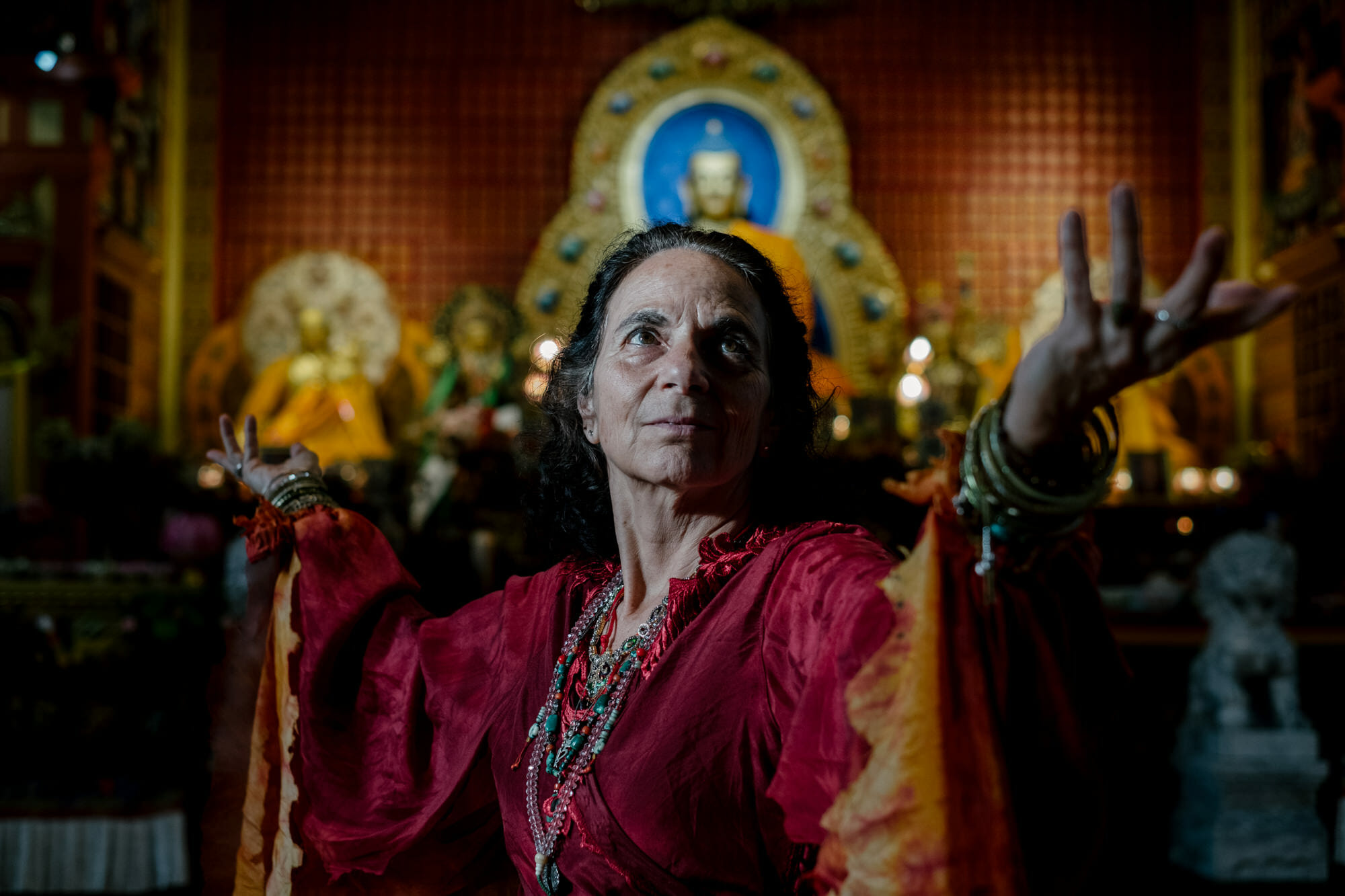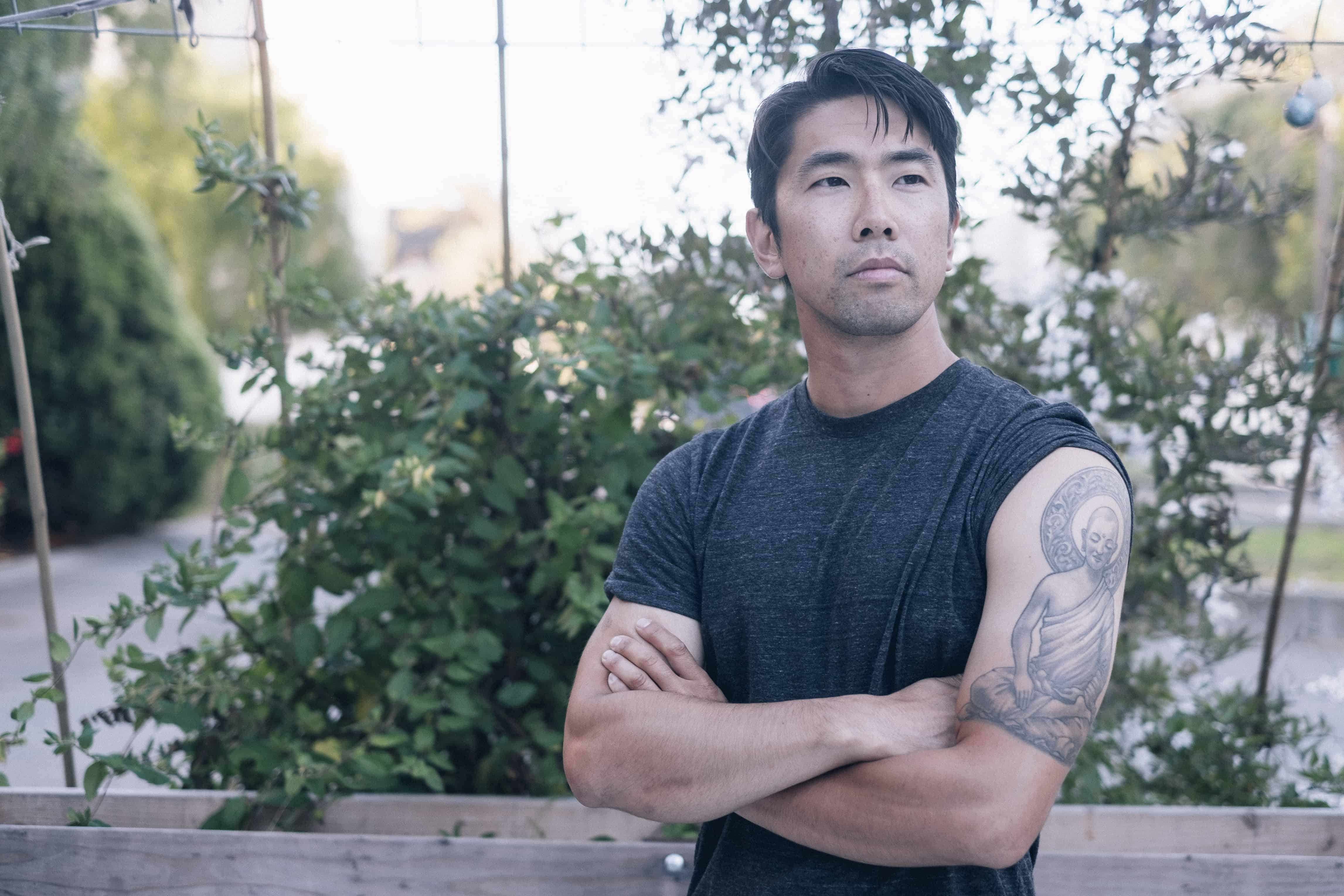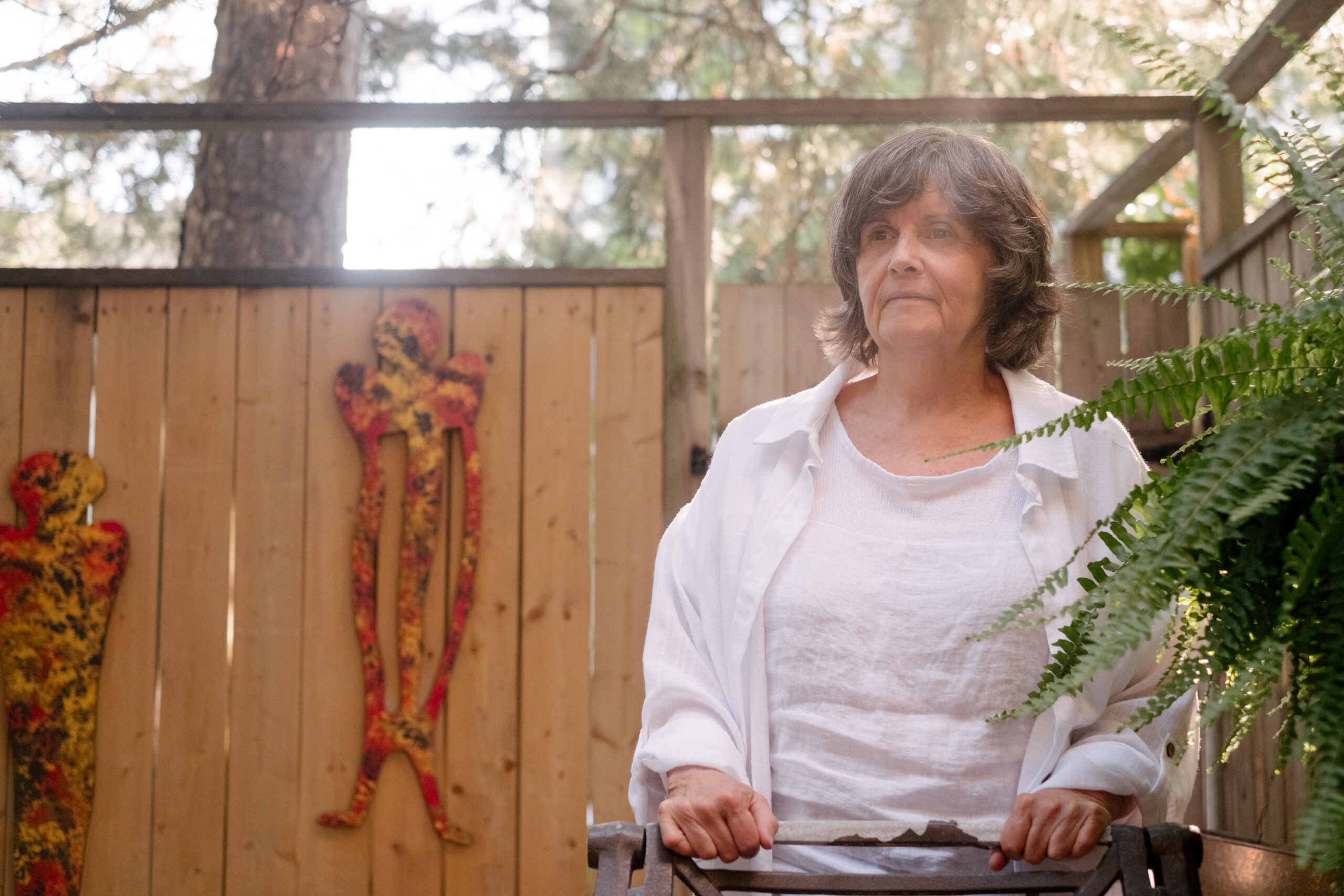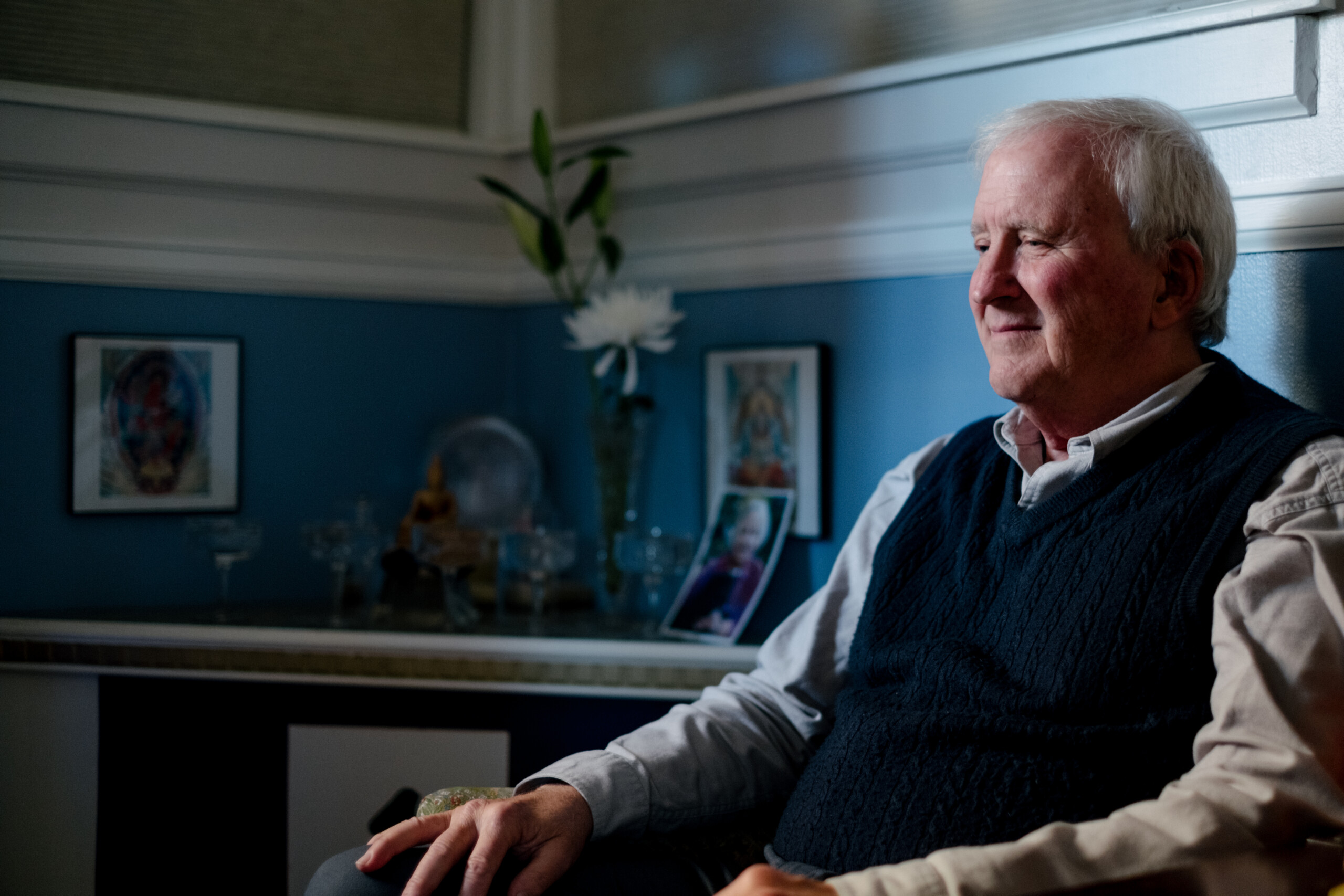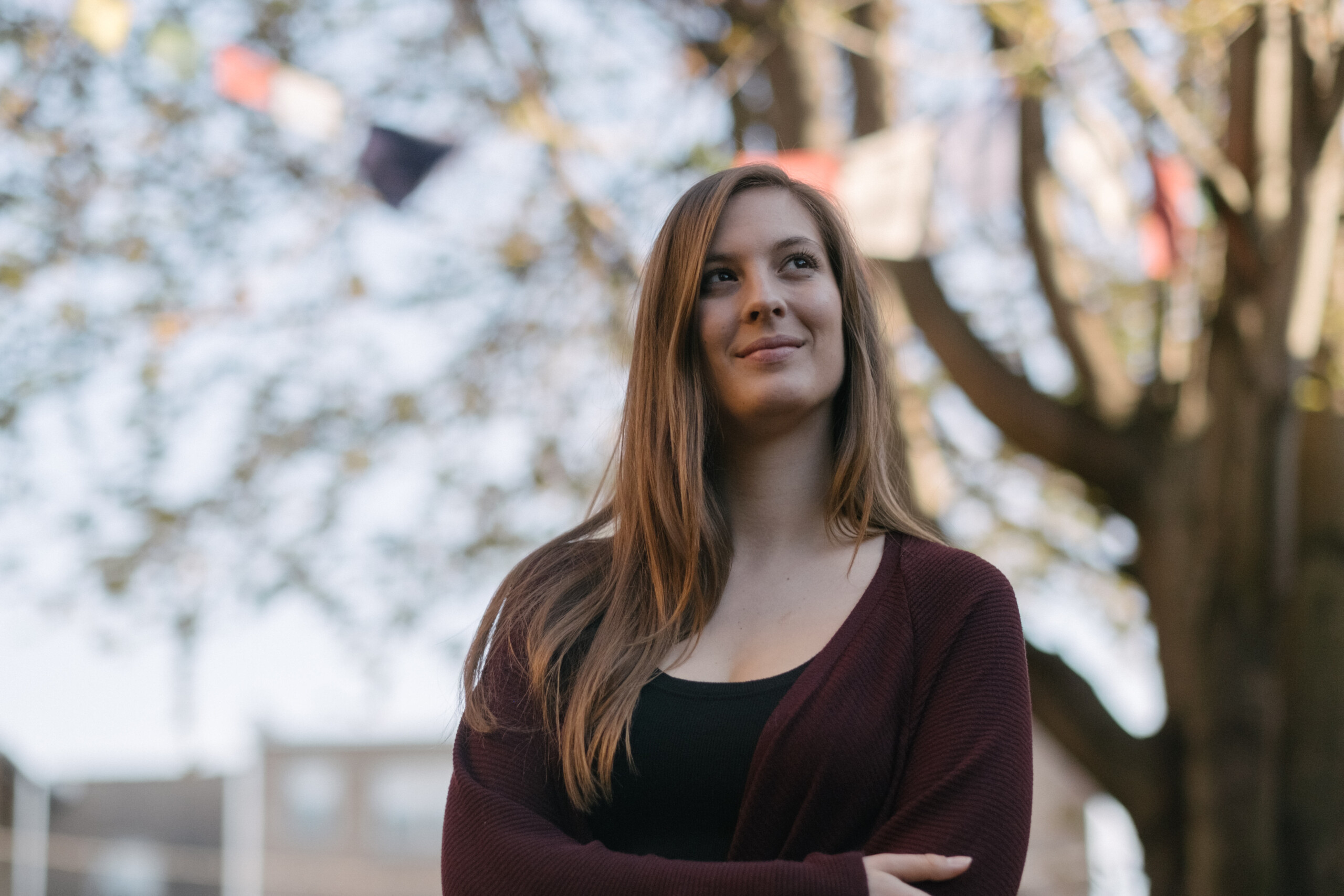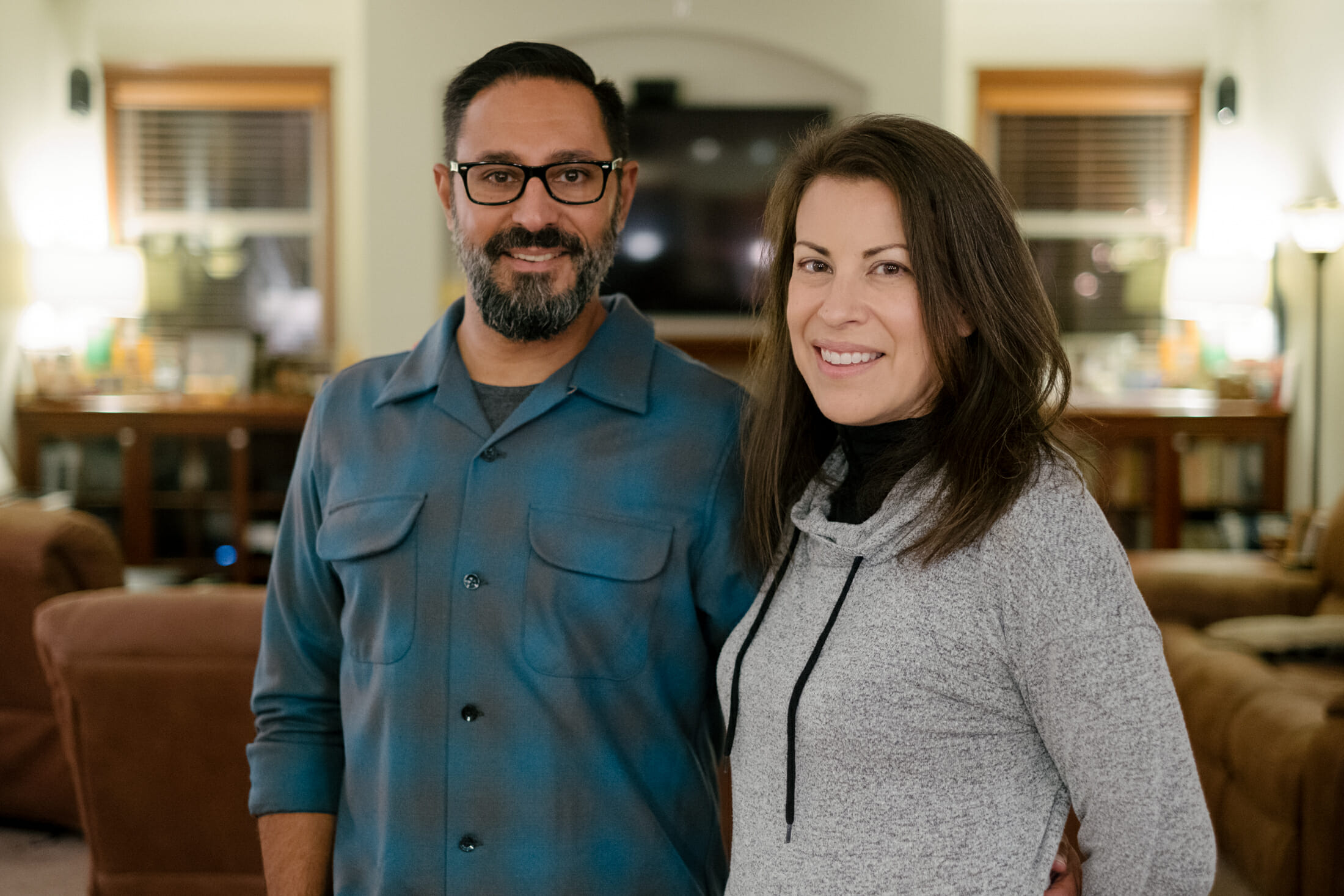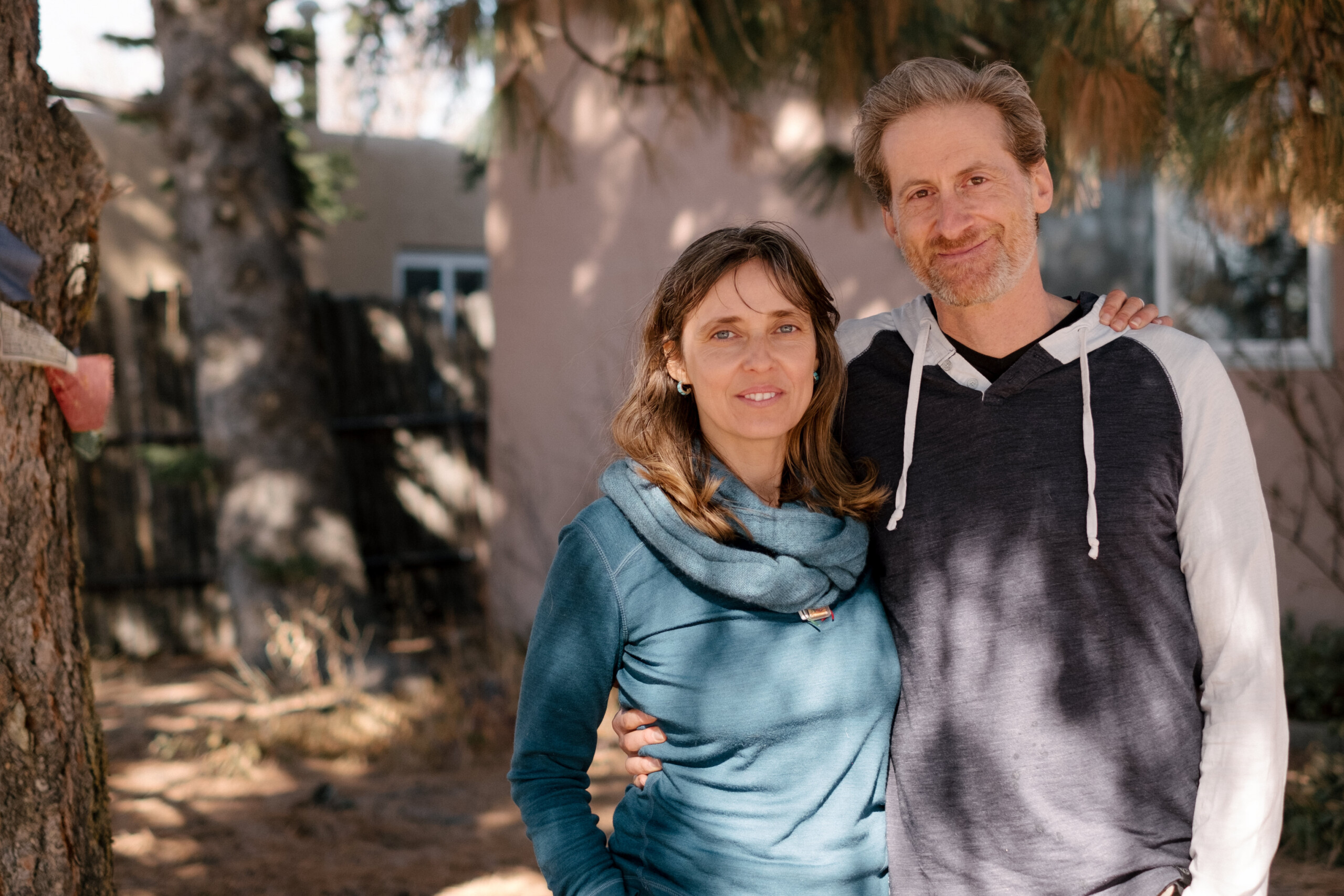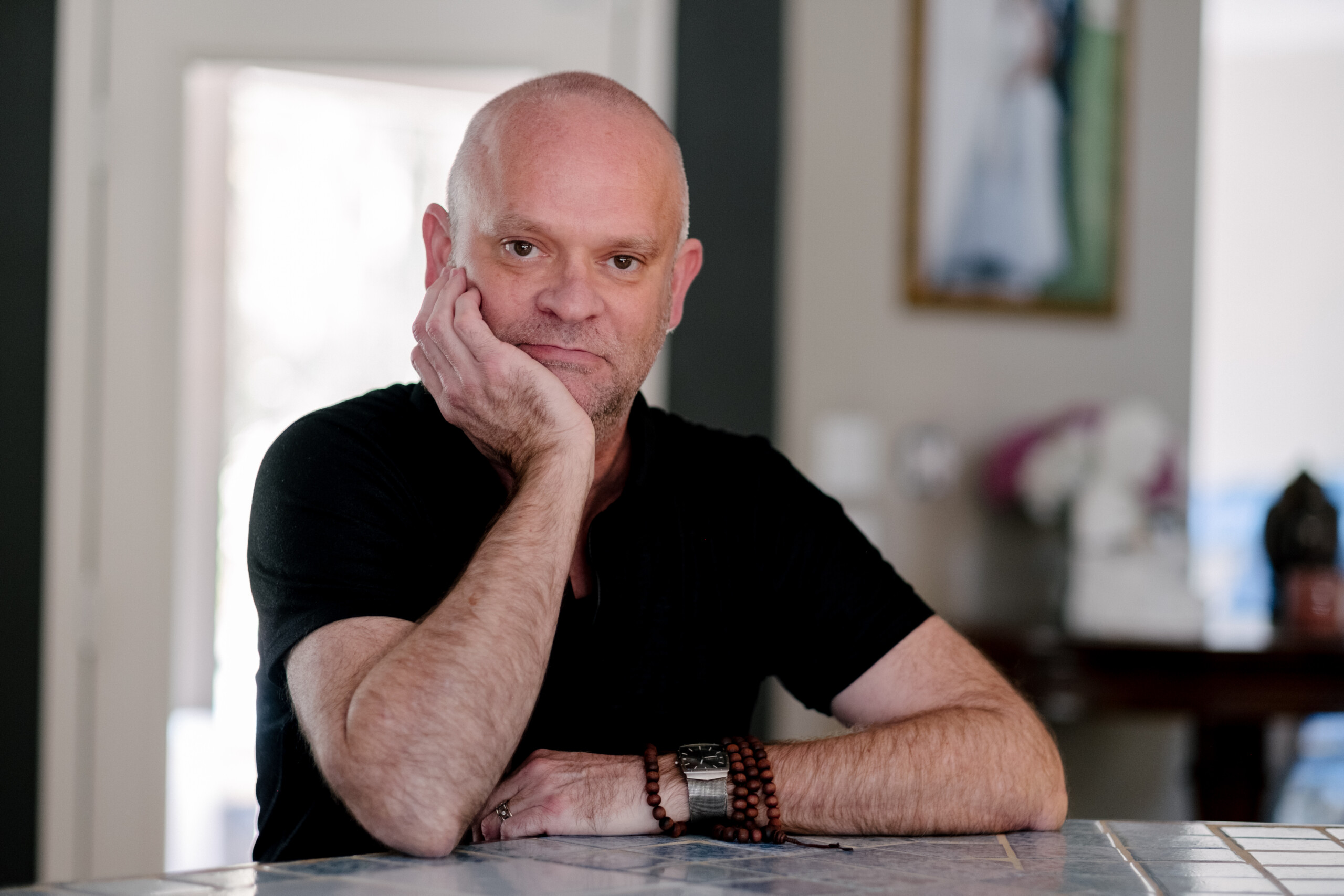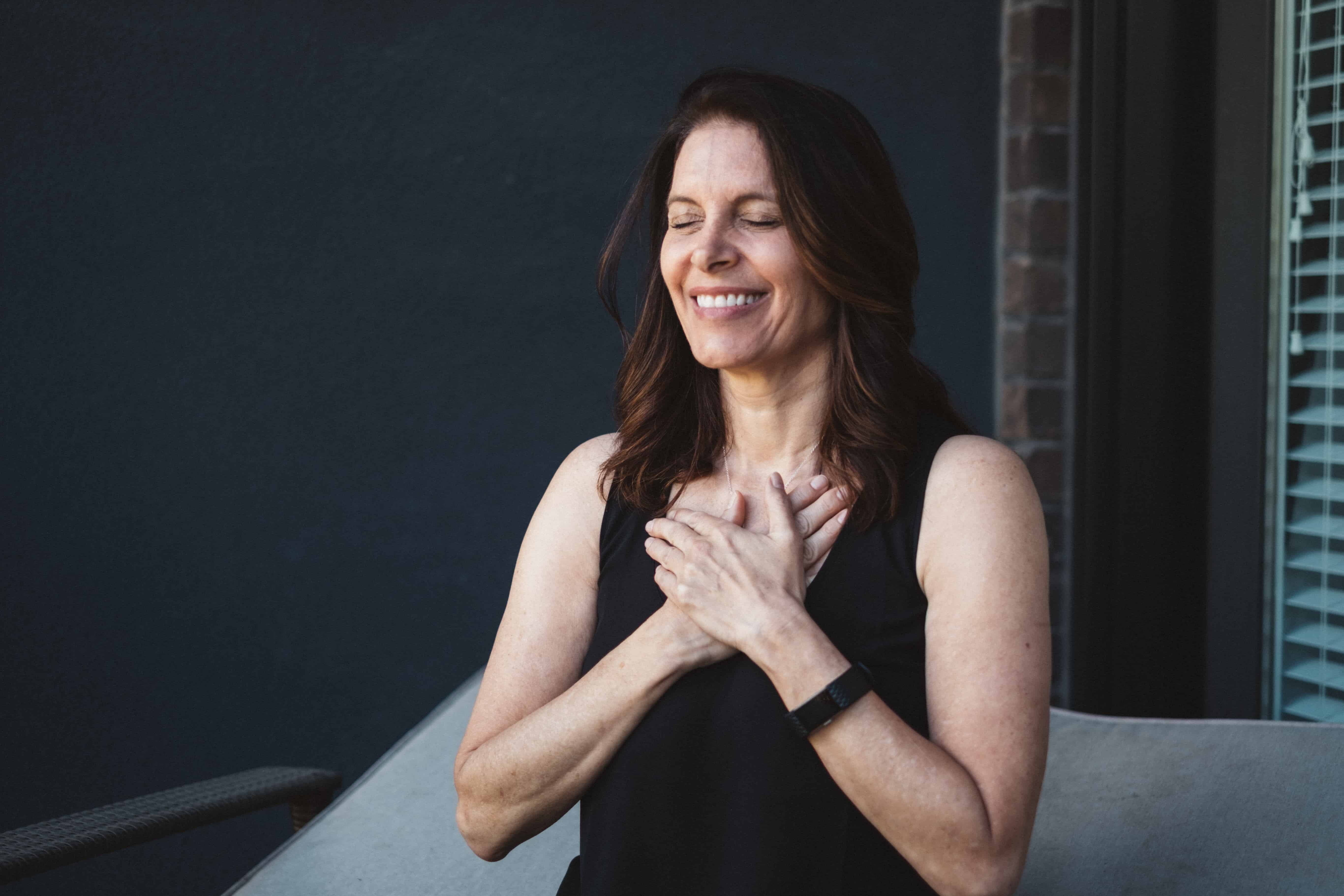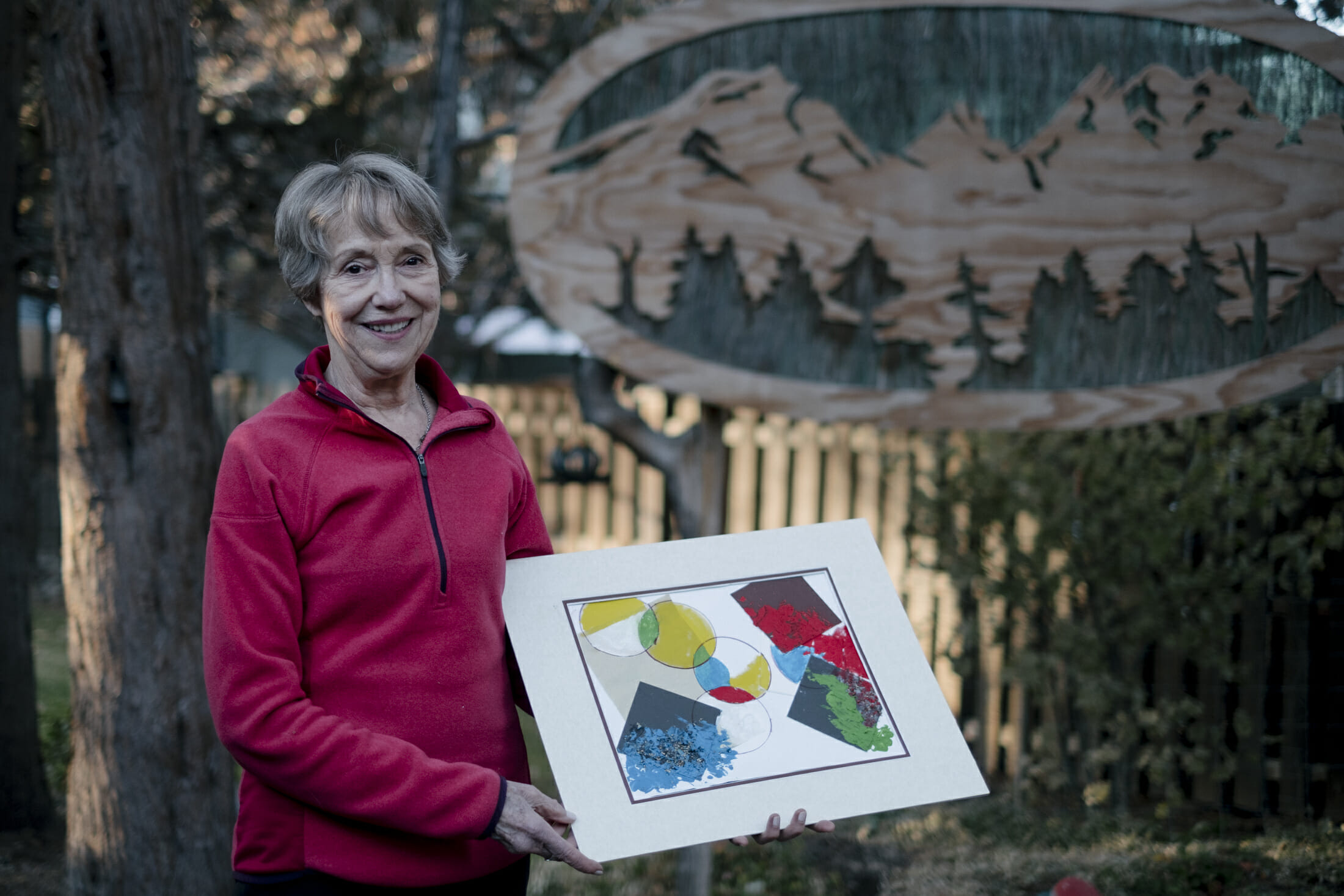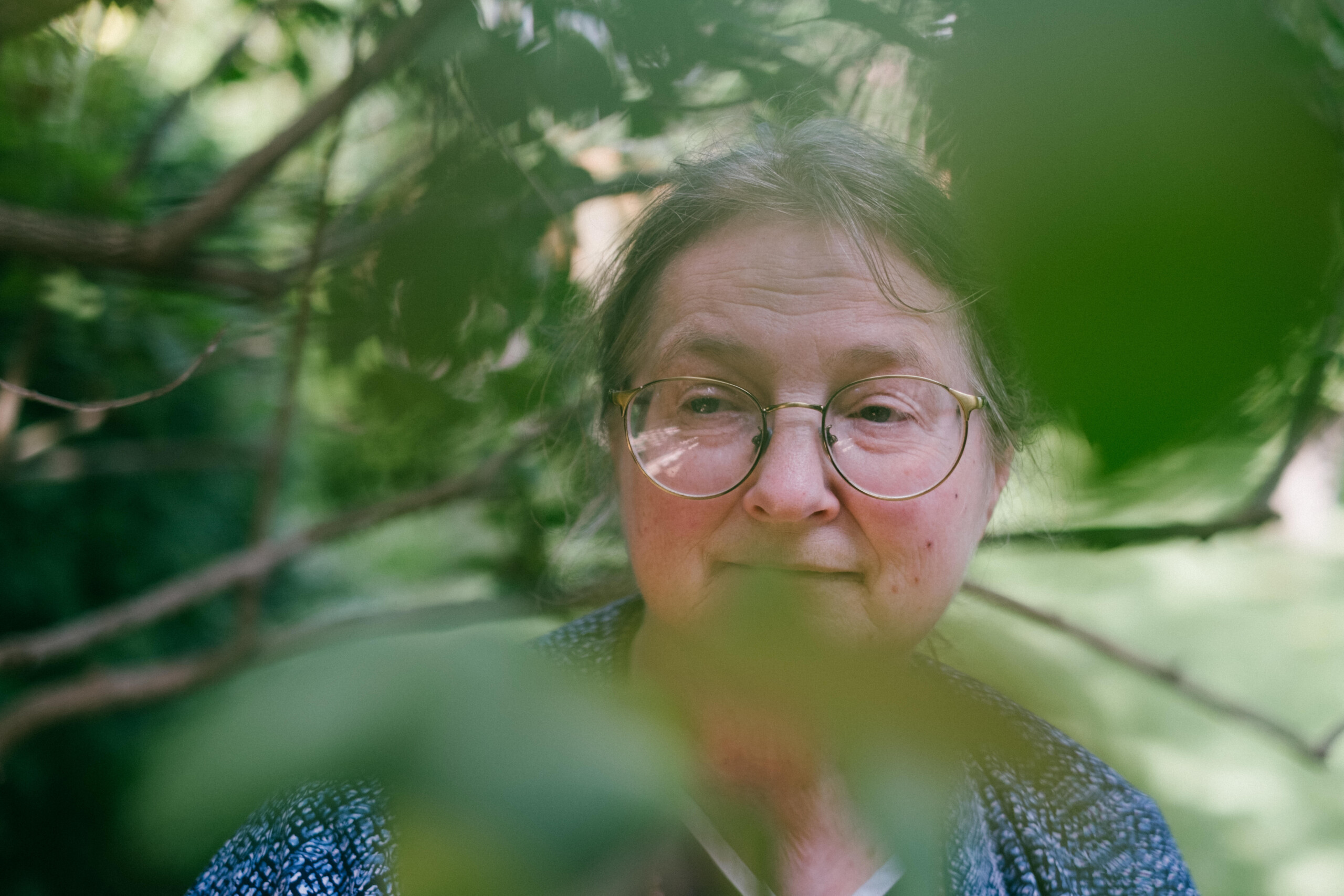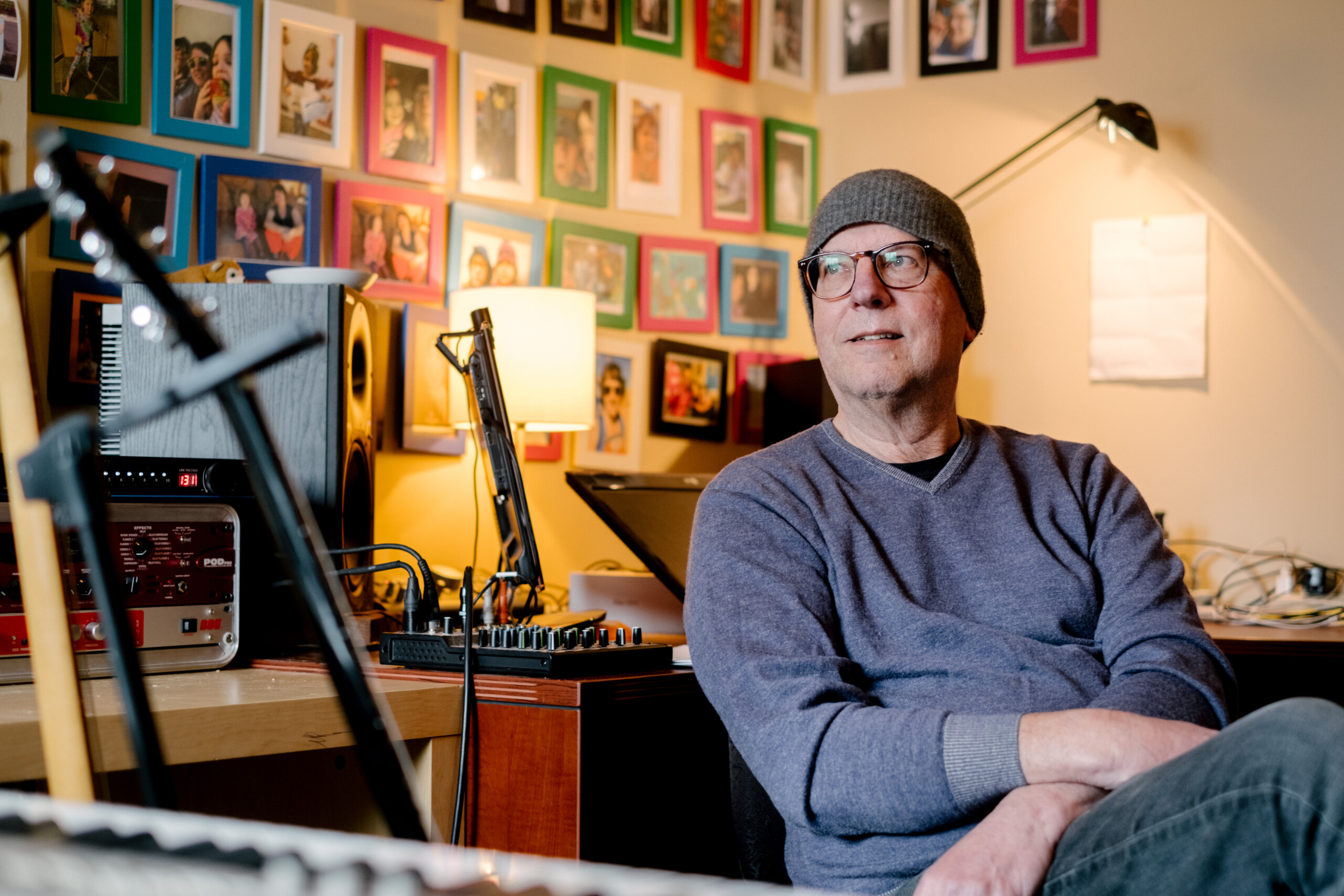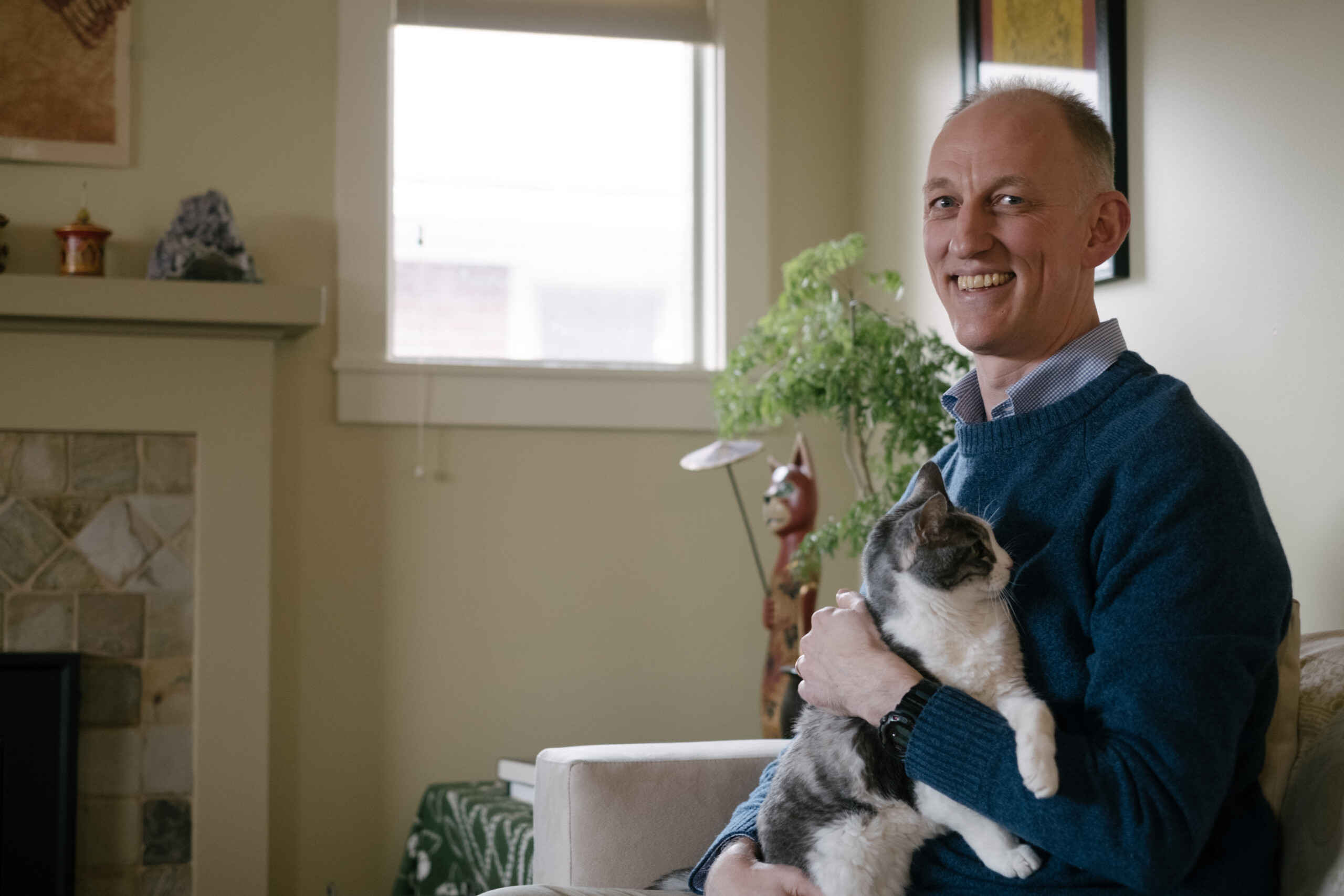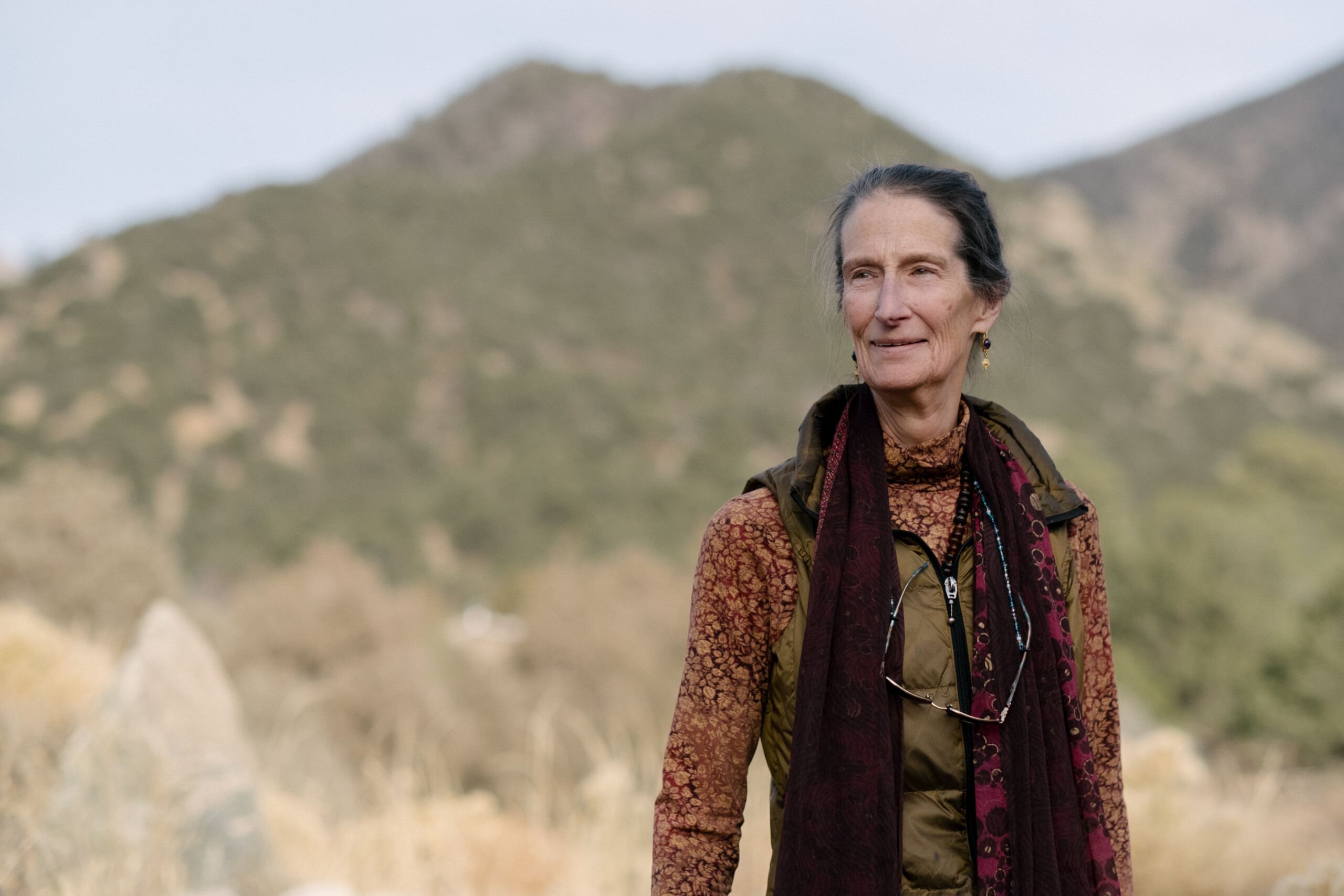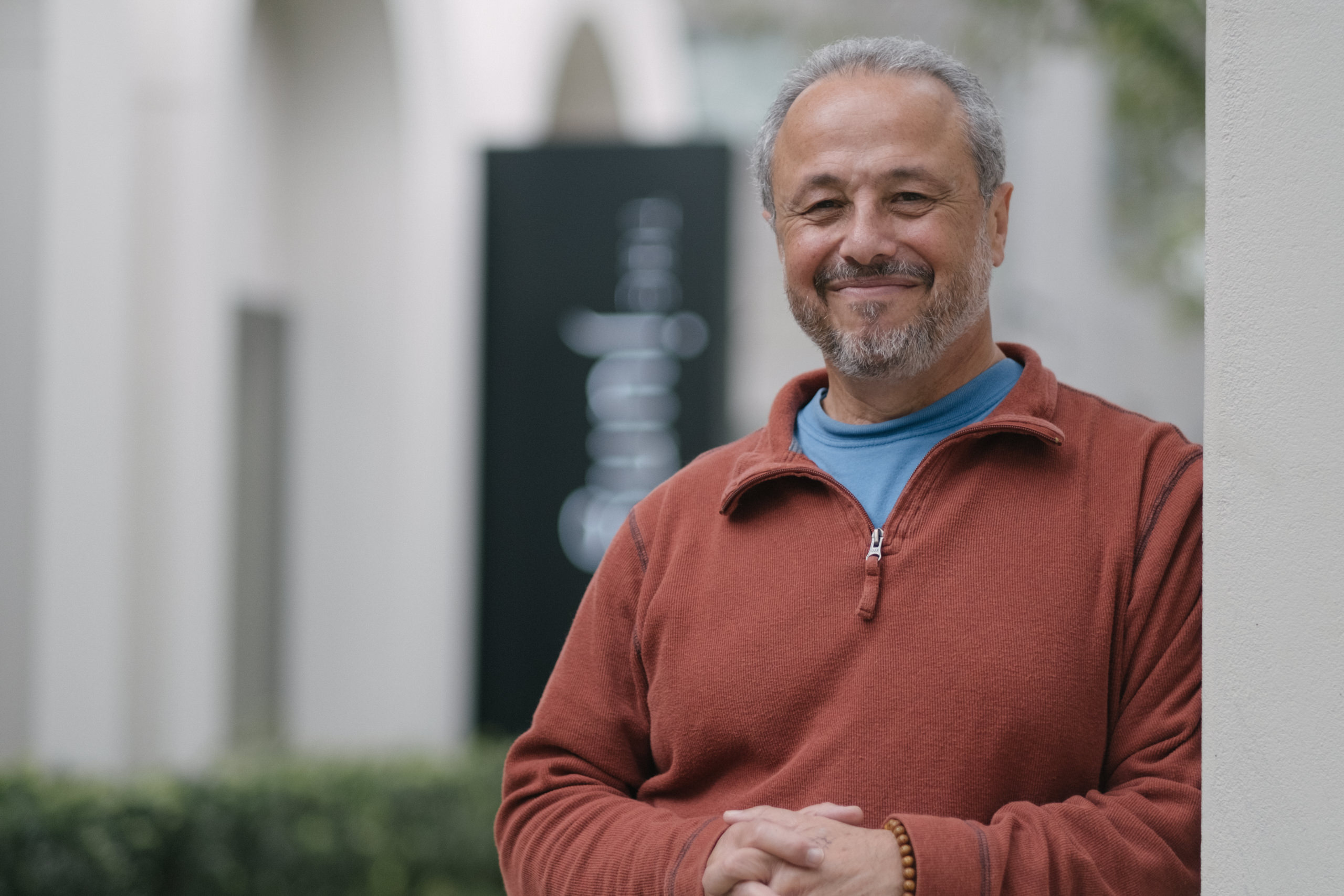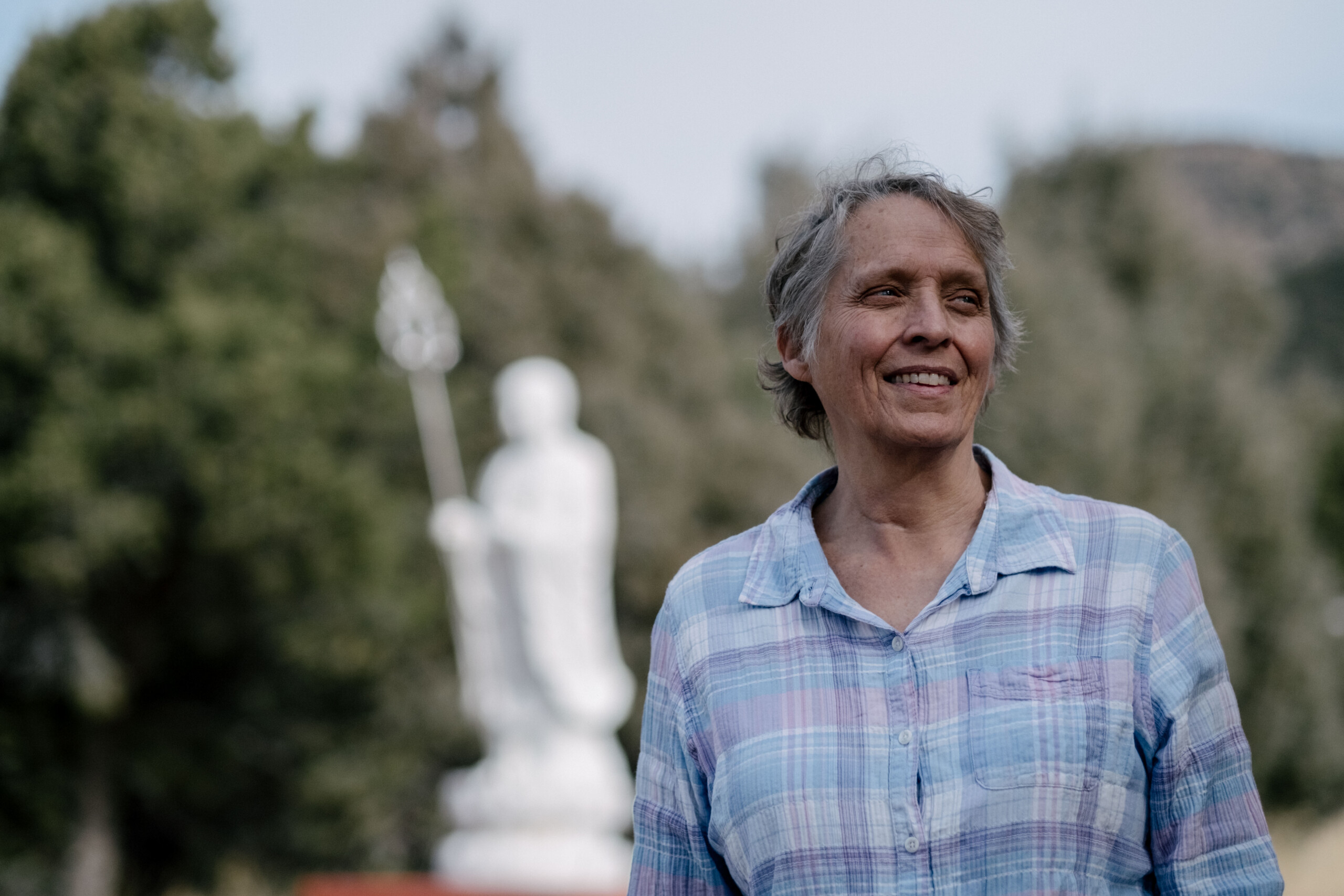Background
Donovan Early, born and raised in southeast Texas, shares a tumultuous childhood marked by instability, abuse, and neglect. Despite the challenges, Donovan emerges as a driven individual, channeled through fear and anger. Professionally, he excels as an advanced practice nurse specializing in anesthesia, a role that takes a significant hit when he confronts opioid abuse, leading to his admission to rehab in October 2011.
The emotional and spiritual devastation pushes Donovan onto the road of recovery, initially marked by skepticism towards the 12-step process. Seeking alternatives, he reaches out to Alejandro Trouble, a pivotal figure who becomes the guide on his path to redemption. Donovan reflects on his journey, highlighting the importance of overcoming personal struggles and finding solace in his role as a nurse, husband, and father to his cherished family.
Lineage
Donovan describes his experience with Buddhism, particularly the teachings and practices within his sangha. Under the guidance of Alejandro Trouble, the approach to Buddhism is characterized as relaxed, non-ceremonial, and non-ritualistic, emphasizing individual choice and comfort. Donovan acknowledges that while he may not excel intellectually as a student, he connects with Buddhism on a spiritual level.
The sangha, which doesn’t impose formal dress codes or financial commitments, welcomes members to participate as they feel comfortable. They regularly hold retreats, fortunate to have a resident lama, Justin, who contributes significantly to their community. The sangha practices various forms of teachings, including Dream Yoga, with the aim of promoting peaceful sleep and addressing daily concerns before bedtime.
Donovan contrasts his sangha’s informal approach with other Buddhist traditions, highlighting the diversity within Buddhism. He shares an example of a Zen Buddhist center in San Antonio, Texas, led by his best friend, emphasizing its formalized and ceremonial nature. Despite not resonating with the rigidity of certain practices, Donovan expresses a sense of connection and peace within his own sangha, where individual preferences and choices are respected.
Recovery
Donovan reflects on his journey of recovery from substance abuse, highlighting the pivotal role of his encounters with Alejandro Trouble. Following inpatient treatment and outpatient care for various substance use disorders, Donovan embraced a medical-based approach rooted in complete abstinence and a 12-step program. However, he struggled to connect with these methods, feeling bound by fear and unable to find a safe space within himself.
Meeting Alejandro marked a turning point for Donovan. Engaging in one-on-one sessions, they explored spiritual practices that resonated with him on a deeper level than the 12-step program. Incorporating breathwork, sound, and visualization, Alejandro helped Donovan connect more profoundly with his inner self. This spiritual approach proved transformative, providing Donovan with a sense of peace and a safe space within.
Alejandro’s teachings on visualizing a safe space, accepting traumatic experiences, and integrating daily practices gradually enabled Donovan to release deep-seated anger and fear. Over time, Donovan found himself naturally incorporating these practices into his daily life, resulting in a profound transformation. His connection with the sangha, regular practices, and the integration of Buddhism became a fundamental aspect of his identity, influencing both personal and professional spheres. Today, Donovan credits this spiritual connection with saving his life and considers it a constant and positive presence that has permeated every aspect of his being.
Practices
As Donovan immersed himself in the Texas sangha and delved into Tibetan Buddhist healing practices, he initially embraced the physical aspects of the rituals to address internal turmoil. Coming from a Western healthcare background, he was accustomed to understanding the “why” behind practices. Alejandro, the guide in this spiritual journey, occasionally conducted sessions explaining the essence and origins of their practices.
Through sessions, Donovan gained insights into practices like the nine breaths of purification. Alejandro elucidated the significance of each step, such as clearing anger or attachment, and emphasized visualization with colors. This intellectual understanding deepened Donovan’s connection to the practices. For instance, the nine breaths of purification became an integral part of his daily routine, extending beyond structured sessions.
The soul long, or Tibetan Yoga, involved five movements to activate specific chakras. Donovan found the intense energy and breath-holding involved in these movements to be a powerful way to clear his mind. The subsequent practices, including the warrior syllables and drum sounds, further contributed to this sense of clarity and connectedness. The culmination of these practices led to a contemplative meditation, providing Donovan with a profound feeling of stillness and safety, free from the chaotic “monkey mind” of incessant thoughts.
Relationships
In Donovan’s transformative journey with Buddhist practice, profound changes in his perceptions and interactions with others became evident. Previously, he would avoid eye contact with homeless individuals, distancing himself from their existence. However, as his Buddhist practice deepened, he found himself extending compassion, recognizing their needs, and offering assistance without judgment.
This shift extended beyond personal encounters to his professional life. Donovan, once quick to form rigid judgments about people, became more open-minded and less judgmental. The need to be superior to others faded, allowing him to focus on providing genuine care. This change positively impacted his career, with colleagues acknowledging his skills without the pressure of being the “best.”
Amid personal challenges, such as a divorce and subsequent remarriage, Donovan found solace in his Buddhist practice. Alejandro, his spiritual guide, even officiated his wedding. The newfound openness and connectedness extended to his role as a stepfather, contrasting with his previous rigid parenting style. Despite imperfections, conflicts became easier to navigate, fostering a sense of peace.
Donovan reflected on how his practice influenced his approach to people from diverse backgrounds, eradicating aversions and fostering a genuine acceptance of others. He illustrated instances where he intentionally avoided knowing about prisoners’ pasts, treating each person with equal care regardless of their circumstances. This shift highlighted a significant evolution in his perspective, emphasizing compassion and understanding over judgment.
In essence, Donovan’s Buddhist practice profoundly infiltrated both his personal and professional life, fostering a more relaxed, open-minded, and peaceful existence. The transformation he underwent allowed him to engage with others authentically, fostering connections that transcended previous limitations.
Sangha
Donovan’s introduction to Buddhism unfolded in Mantia, Texas, where he attended his first practice at a small center led by Alejandro, a board member. Despite initial apprehension and unfamiliarity with the practices, Donovan found the Sangha to be warm and welcoming. During preparations for a retreat, his wife volunteered to handle flowers, and Donovan was handed the key to the center without hesitation.
The Sangha’s openness and support left a lasting impression on Donovan. Members, including Alejandro, Dorothy Matthews, and others, exuded a radiant energy that made the Sangha feel like a tight-knit community. The unconditional warmth extended to everyone, regardless of their frequency of attendance. Over the nearly ten years of his association, Donovan expressed how the Sangha became an invaluable source of support, particularly during challenging times.
He highlighted the Sangha’s ability to seamlessly integrate spirituality and business, running the center efficiently while bringing in llamas for retreats from around the world. Donovan marveled at the incredible experience of practicing alongside these spiritually connected individuals, emphasizing the power of group prayer, recitation, and chanting. As the COVID-19 pandemic shifted interactions to a virtual space, Donovan shared his longing for the in-person connection and the unique energy of shared practices. Despite the physical distance, Donovan expressed feeling blessed to have found such a supportive and spiritually enriching community.
Teachers
Donovan is deeply grateful for the diverse teachings he receives, with Alejandro representing the Western influence, Geshe Denma as the resident lama from the East, and the Sangha’s inclusive approach. His transformative journey began with a personal connection to Alejandro, evolving into a broader Sangha experience with exposure to various teachers during retreats.
Alejandro, once Donovan’s formal teacher, has become a close friend over time. The relationship has shifted from formal to more personal, marked by shared interests and a connection beyond the student-teacher dynamic. Despite the geographical and pandemic-related constraints limiting face-to-face interactions, Donovan values the virtual connection and feedback provided by Alejandro.
Denmark, the resident lama, offers a different teaching style, characterized by positivity and a vast knowledge base acquired through years of formal education. Donovan appreciates the contrasting approaches of Alejandro and Denmark. Despite the virtual nature of their interactions, Donovan values the tangible support he receives, even during challenging times, emphasizing the power of being in the presence of these spiritual guides.
Reflecting on the informal nature of the student-teacher relationship in his lineage, Donovan acknowledges the unique opportunity he has to access teachings from such knowledgeable and open-hearted individuals. He recognizes the effort teachers invest in understanding the Western context to deliver teachings effectively. Donovan concludes with a profound appreciation for the richness and flexibility of his Buddhist path, free from dogma and offering a multitude of practices to explore.
The Practice
Donovan recalls Alejandro’s early inquiries about his practice, emphasizing the experiential aspect over intellectual understanding. His introduction to Tibetan Buddhism served as a healing component, with an initial focus on practice rather than theoretical learning. Donovan struggled initially to integrate daily practice into his busy life but found success by scheduling it and eventually developing a genuine enthusiasm for it.
Over time, Donovan observed the evolution of his practice, extending beyond formal sessions to integrate into daily life. He shares instances where subconscious practices influenced positive outcomes in challenging situations, highlighting the power of this integration. Donovan mentions Alejandro’s reminder to focus on the entirety of one’s day rather than fixating on momentary stressors.
Reflecting on his journey, Donovan notes the ongoing challenge of not clinging to negative experiences and emphasizes the importance of daily practice in maintaining mindfulness, gratitude, and acceptance. He acknowledges his need for regular practice, recognizing its role in preventing a return to old patterns. While he doesn’t spend hours in formal practice like some Sangha members, Donovan finds fulfillment in the subtle yet transformative impact of integrating his practice into daily life.
Motivation
Donovan shares his transformative experience with the practice’s dedication and prayer, initially finding it foreign to prioritize others over himself. The concept of dedicating the entire hour-and-a-half practice to all sentient beings felt powerful, challenging his previous self-centered perspective. The practice helped him realize the value of every being and shifted his mindset from considering only himself and his immediate family to appreciating the importance of others.
Despite occasional challenges in attending the Wednesday practice, Donovan finds warmth, support, and enlightenment in the collective dedication to every sentient being. He emphasizes the positive impact of the practices within the lineage and the Bon tradition, acknowledging their significant role in shaping his life. Virtual gatherings via Zoom further strengthen the sense of community, allowing Donovan to connect with the faces, smiles, and wonderful individuals who share this tradition.
Comparison to other traditions
Donovan recounts a conversation with his wife during her initial engagement with Wednesday practices. After approximately three to five months of attending sessions and connecting with the sangha, she questioned whether conversion was necessary. Being Catholic herself, Donovan assured her that there’s no requirement for conversion within their spiritual community. He shared an anecdote about a Catholic priest who used to attend the practices, highlighting the diverse and inclusive nature of their approach to spirituality.
Donovan draws comparisons between the Bon tradition and other more formalized religions such as Christianity, Islam, and Hinduism. He reflects on his experiences during an immersion weekend, where he visited various religious places, observing the more ritualistic and formalized nature of practices in those traditions. In contrast, he emphasizes the non-ritualistic and open-ended nature of the Bon tradition, where there isn’t a specific stepwise pathway or rigid requirements for individuals to follow upon entering the lineage.
Buddhism
Donovan reflects on the diverse facets of Buddhism, emphasizing its adaptability to individual preferences. He acknowledges that people may resonate with different teachings and lineages within Buddhism, catering to various needs for structure and formality. Donovan shares his wife’s experience, a Catholic raised in Asia, who comfortably engages in Bon Buddhism without the need for conversion.
He highlights the inclusive nature of Bon Buddhism, where one can simply participate and learn without a formal conversion process. Drawing a parallel with his wife’s fond memories of contemplative time in the woods during her Catholic schooling, Donovan emphasizes the meditative and contemplative aspects of Bon practice, addressing life’s challenges and fostering connectedness with all sentient beings.
Amid the pandemic, Donovan notes the positive shift to virtual platforms, allowing global participation in Bon practices. He sees this as a silver lining, expanding accessibility to teachings and creating a more interconnected world, demonstrating the resilience and adaptability of spirituality in the face of challenging circumstances.
Mind-Body Institute
Donovan recounts his initial encounter with Alejandro, highlighting Alejandro’s background as born in Argentina to Jewish parents in a predominantly Catholic country. Alejandro pursued a Ph.D. in Eastern religion, becoming a board member of a Texas institute while working at M.D. Anderson full time. At the Mind-Body Institute, he engaged in multidisciplinary approaches, incorporating meditation and acupuncture into patient care, publishing studies on guided meditation’s impact on breast cancer patients’ well-being.
Meeting Donovan, Alejandro, though not a traditional therapist, recognized an opportunity to apply his knowledge and education to help Donovan during a challenging time. The lineage they follow is Tibetan Buddhism, with Alejandro having Tibetan lamas and teachers. Donovan describes the powerful impact of their one-on-one sessions and the gradual integration of Tibetan Buddhist practices into his life. He contrasts this with his previous experiences in parallel with recovery programs and expresses a deeper connection with the Eastern traditions facilitated by Alejandro, emphasizing the transformative nature of their work.

